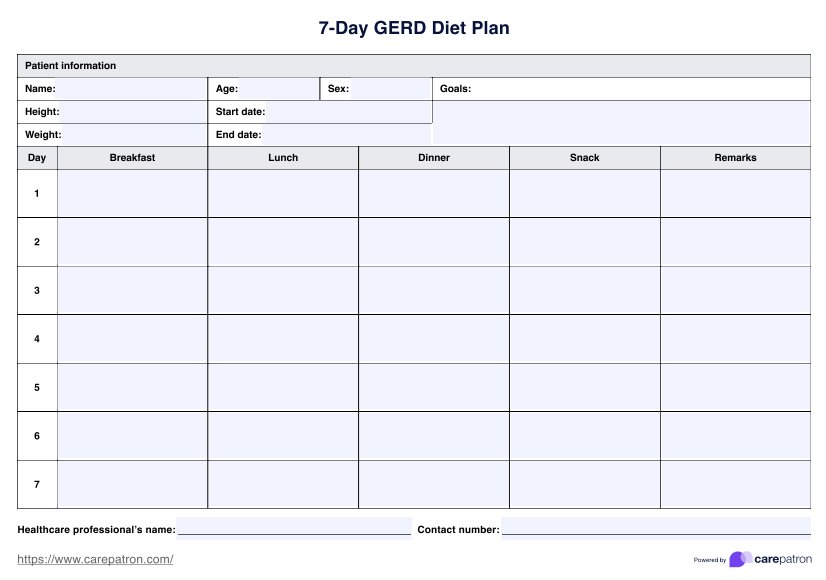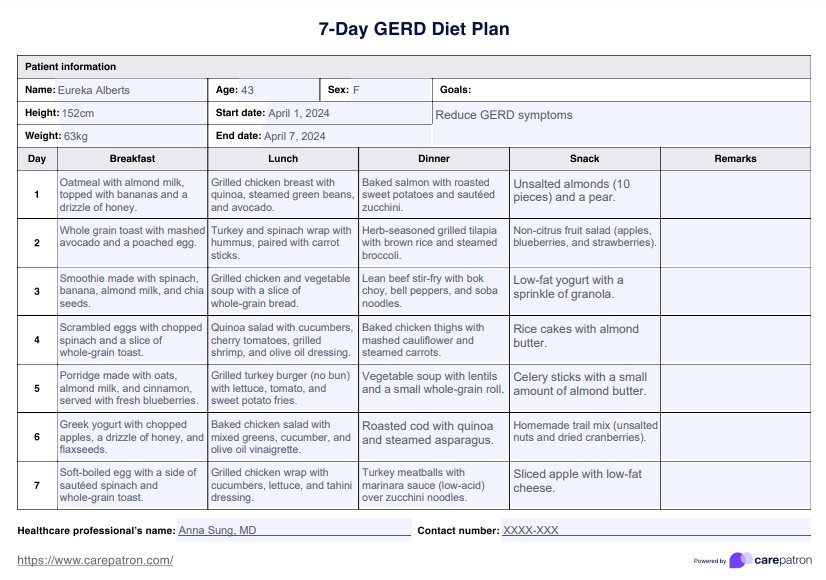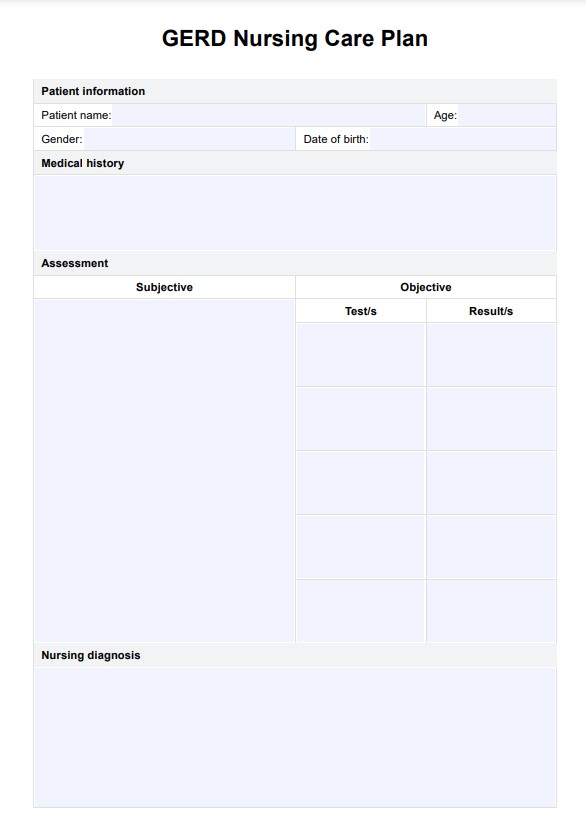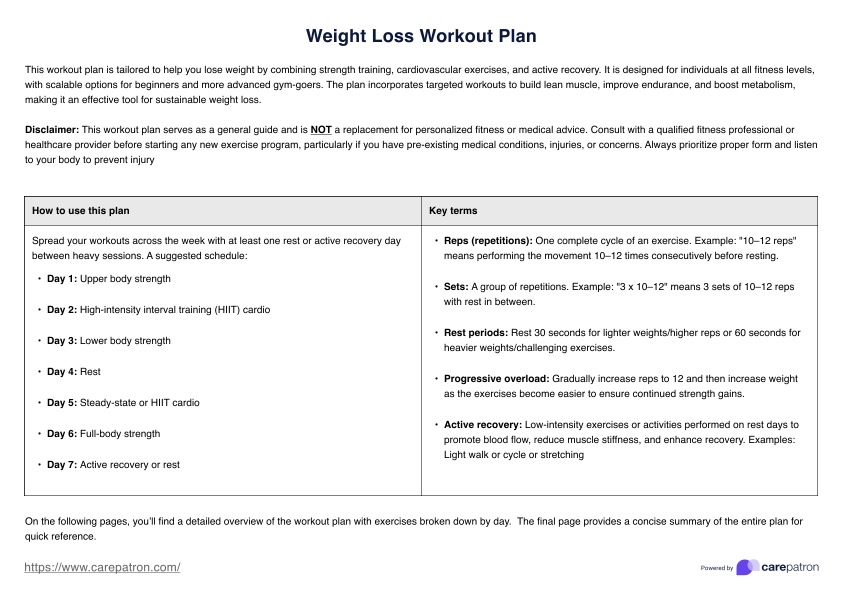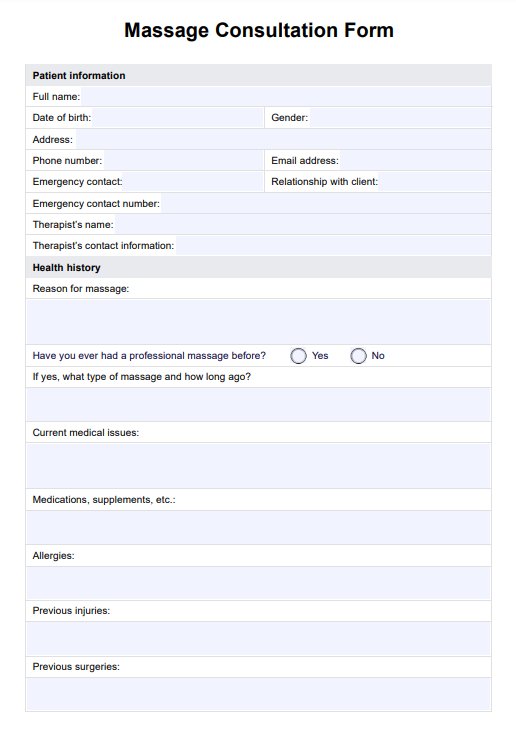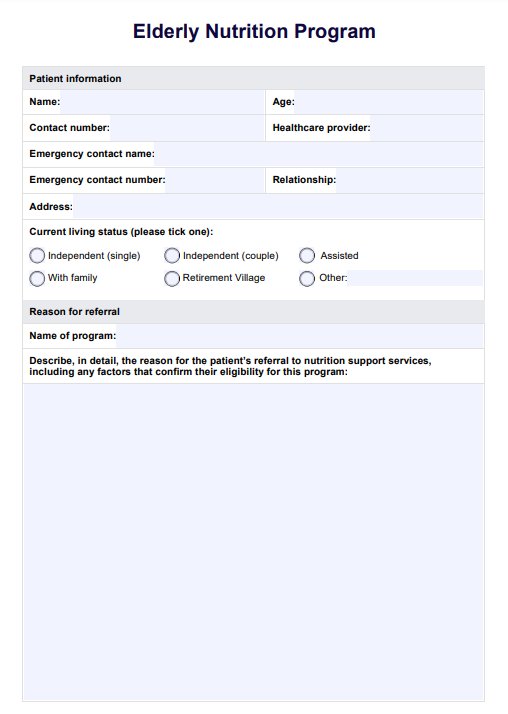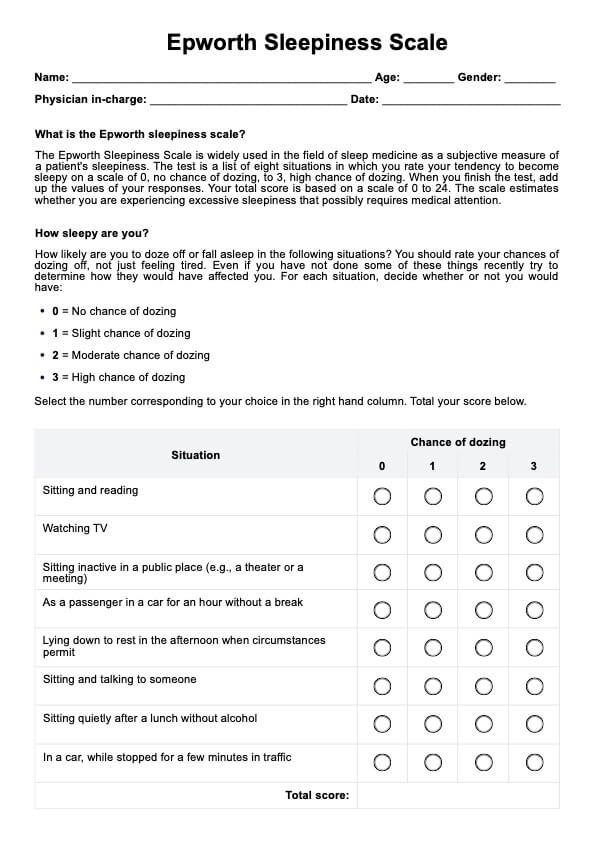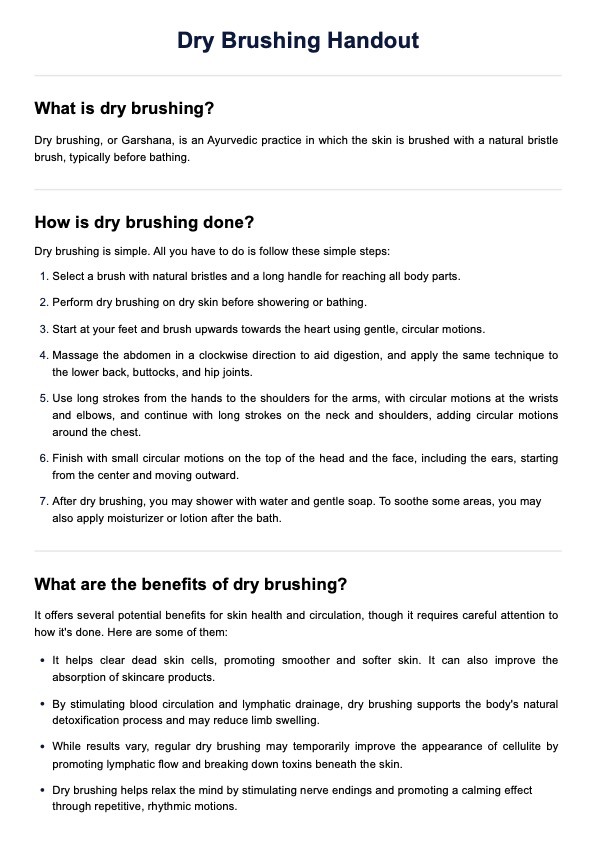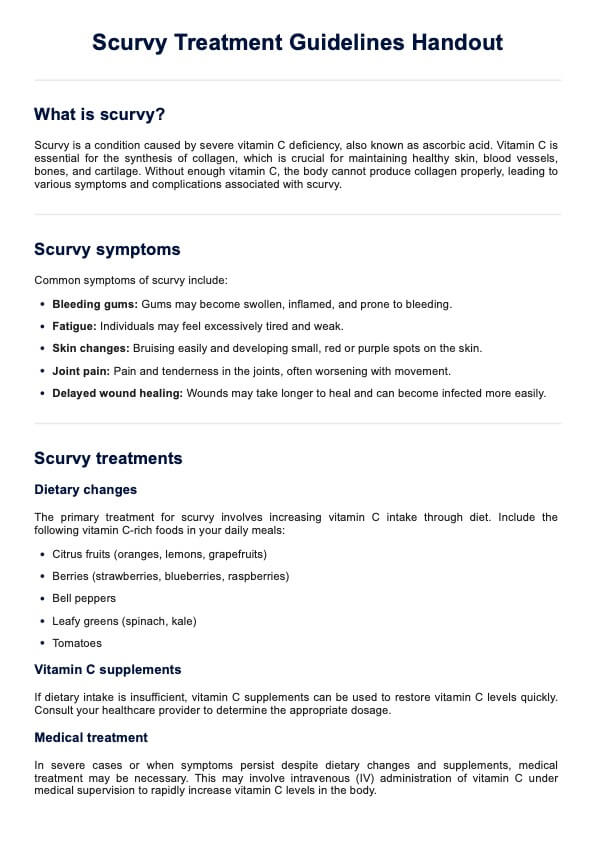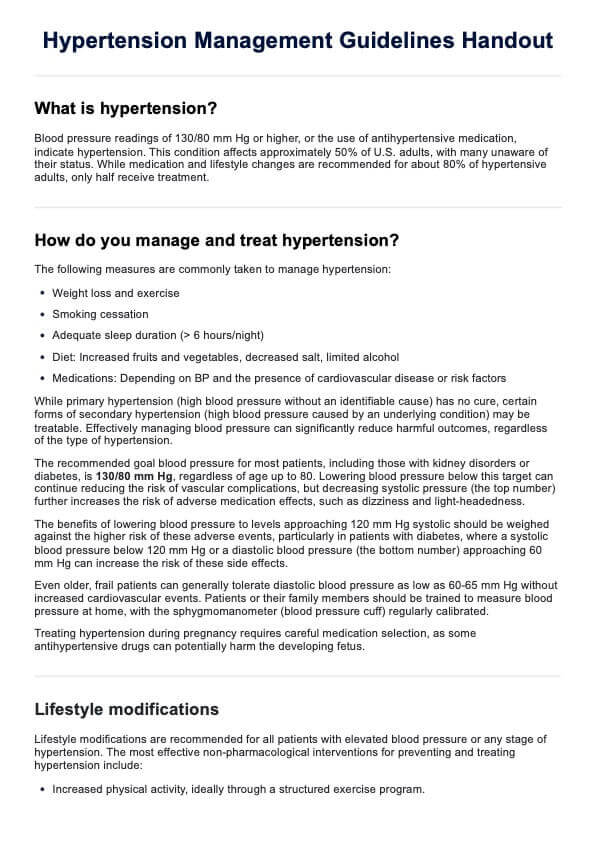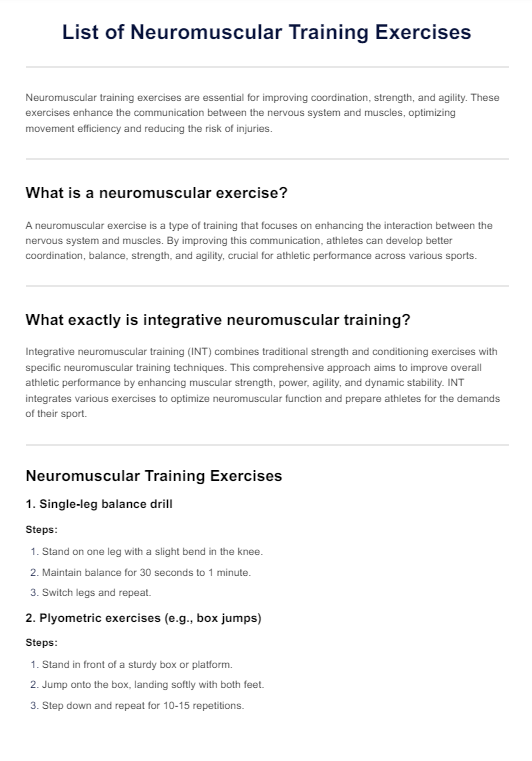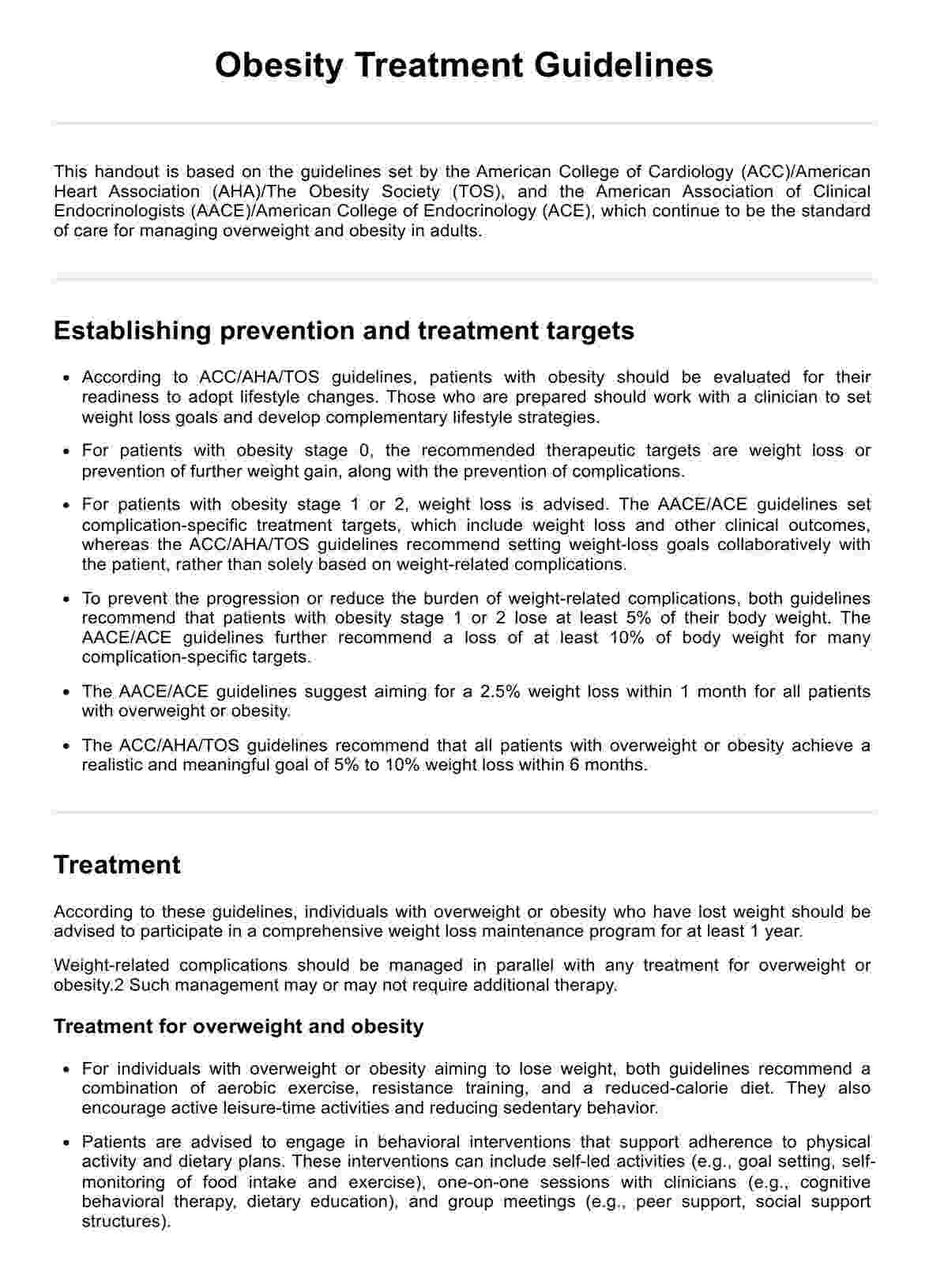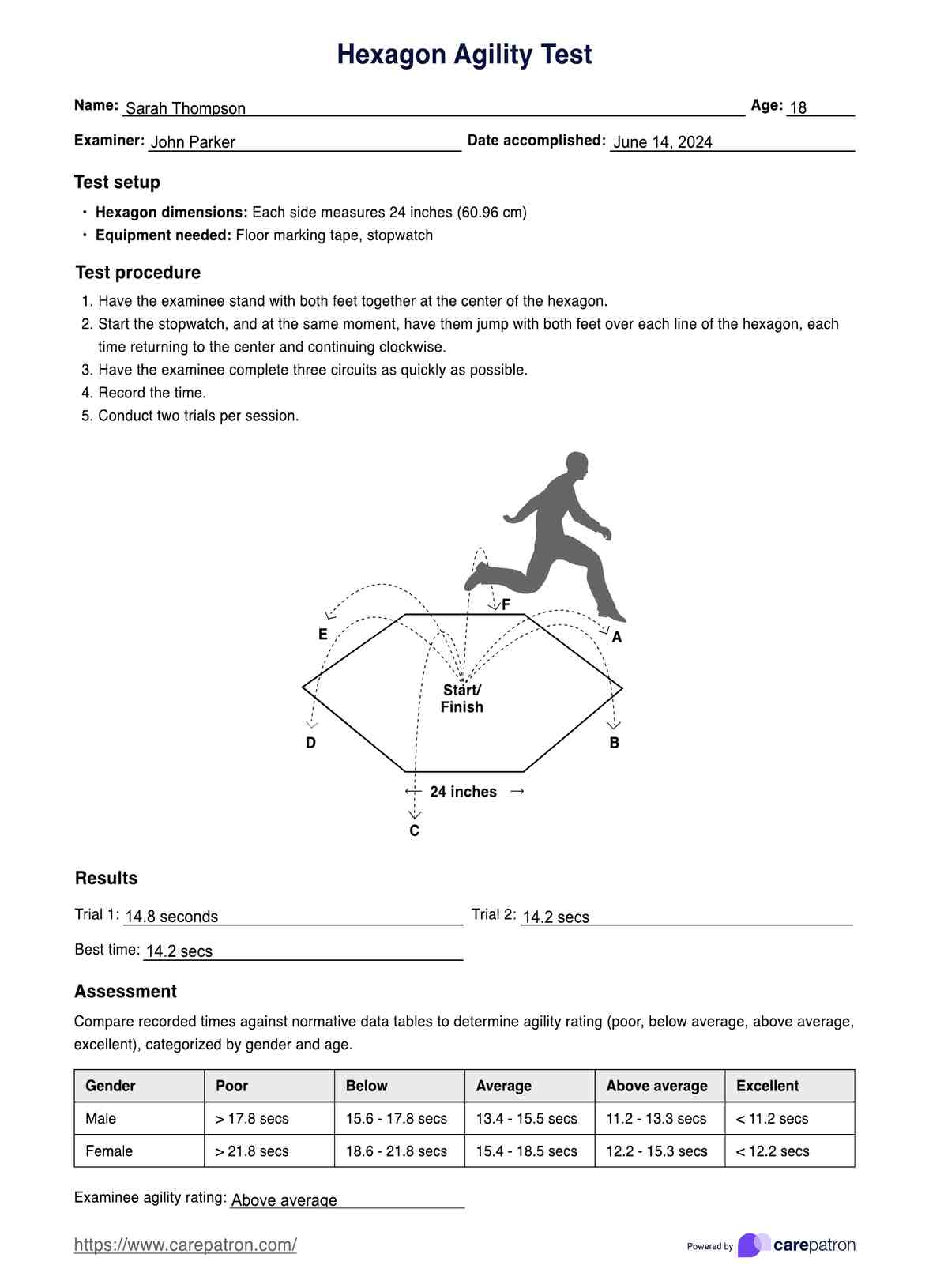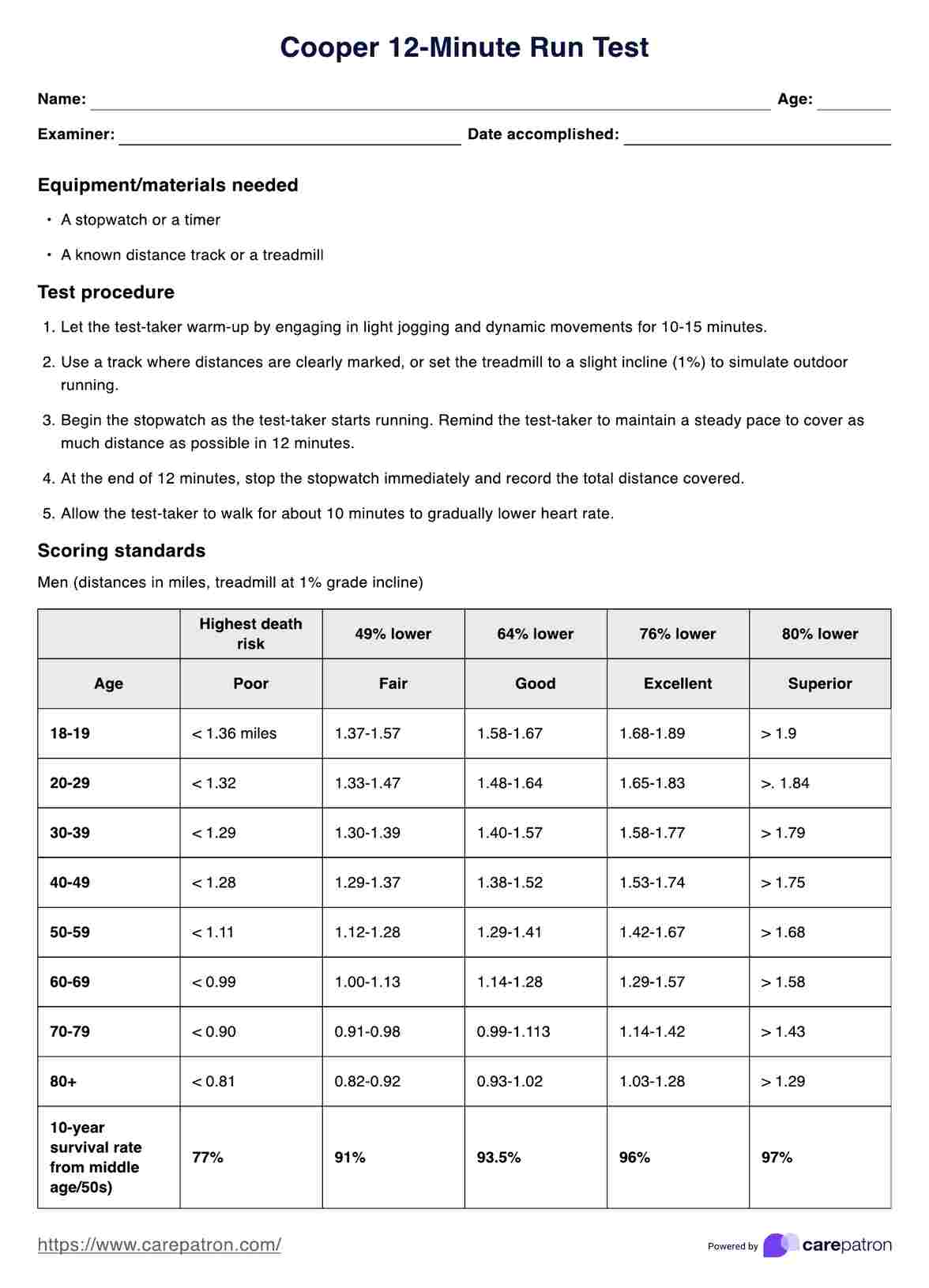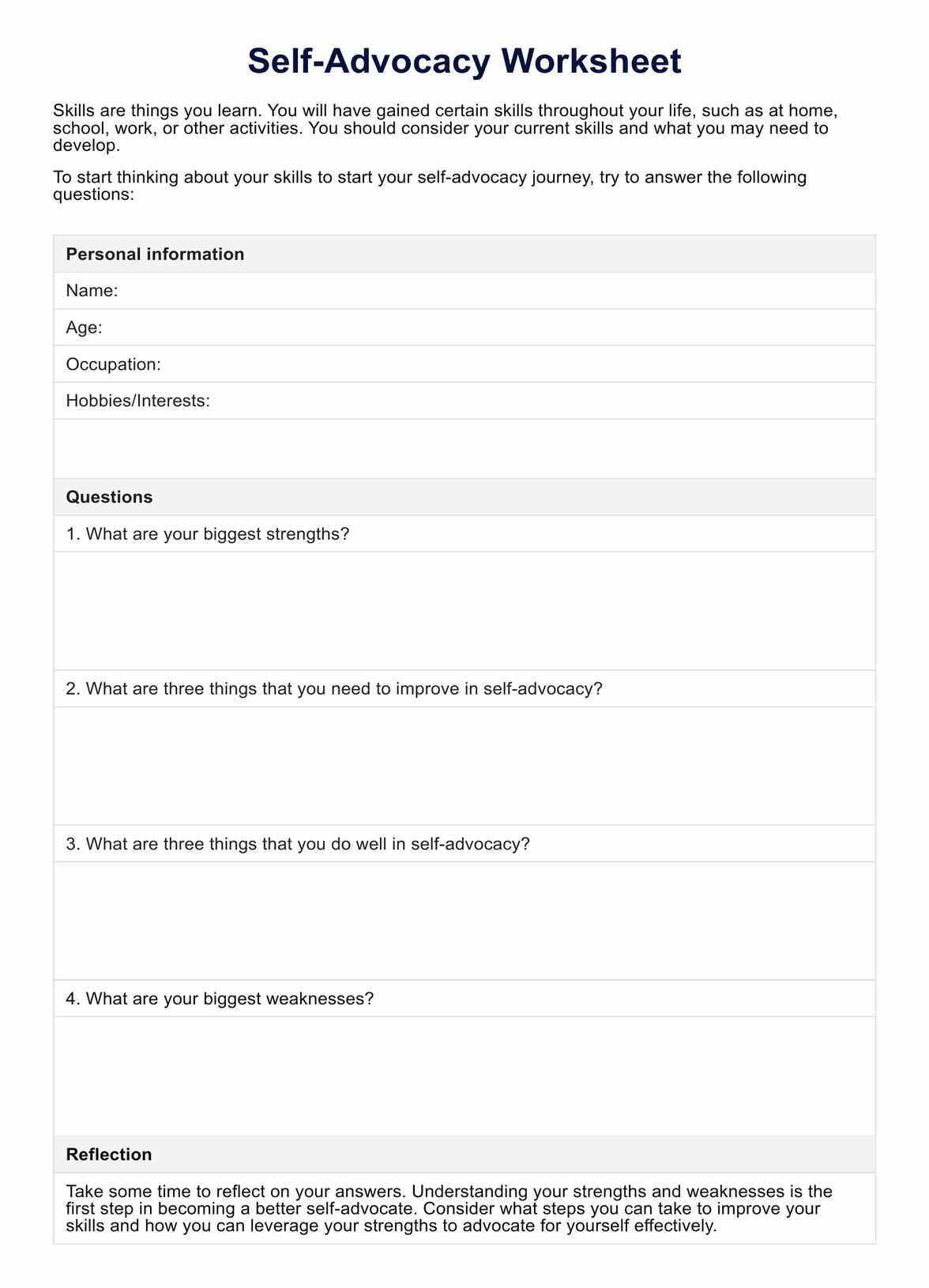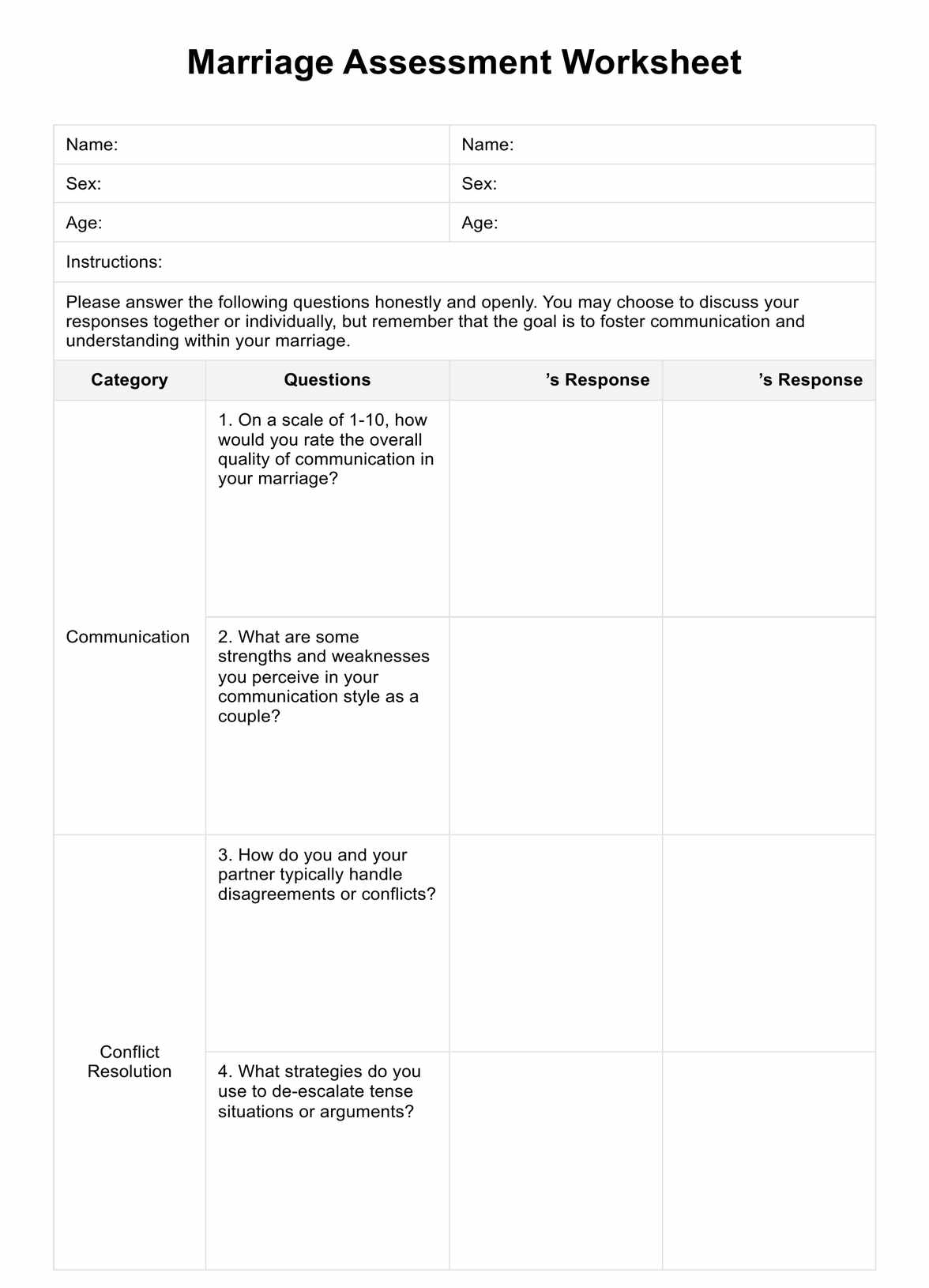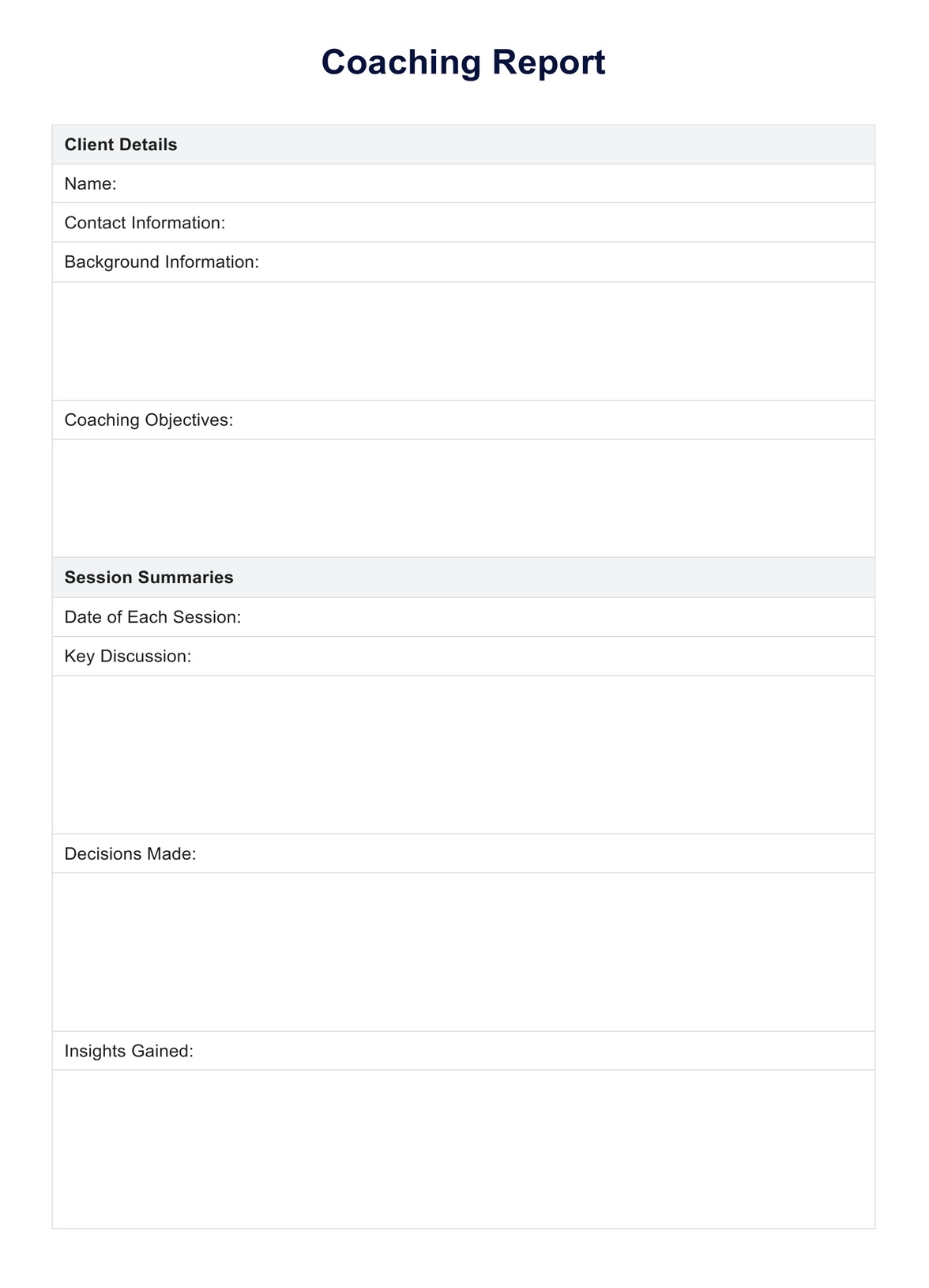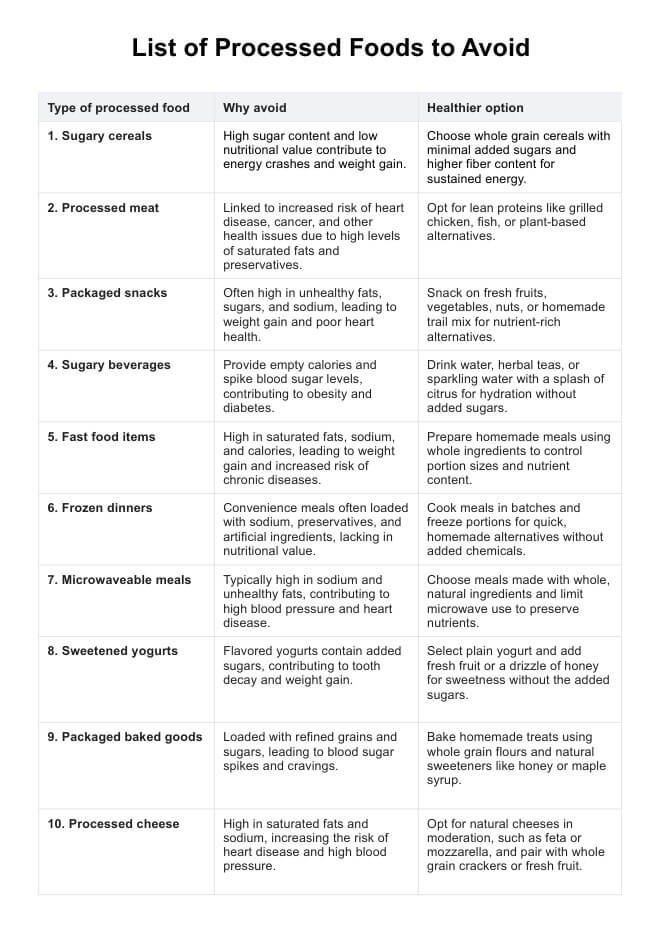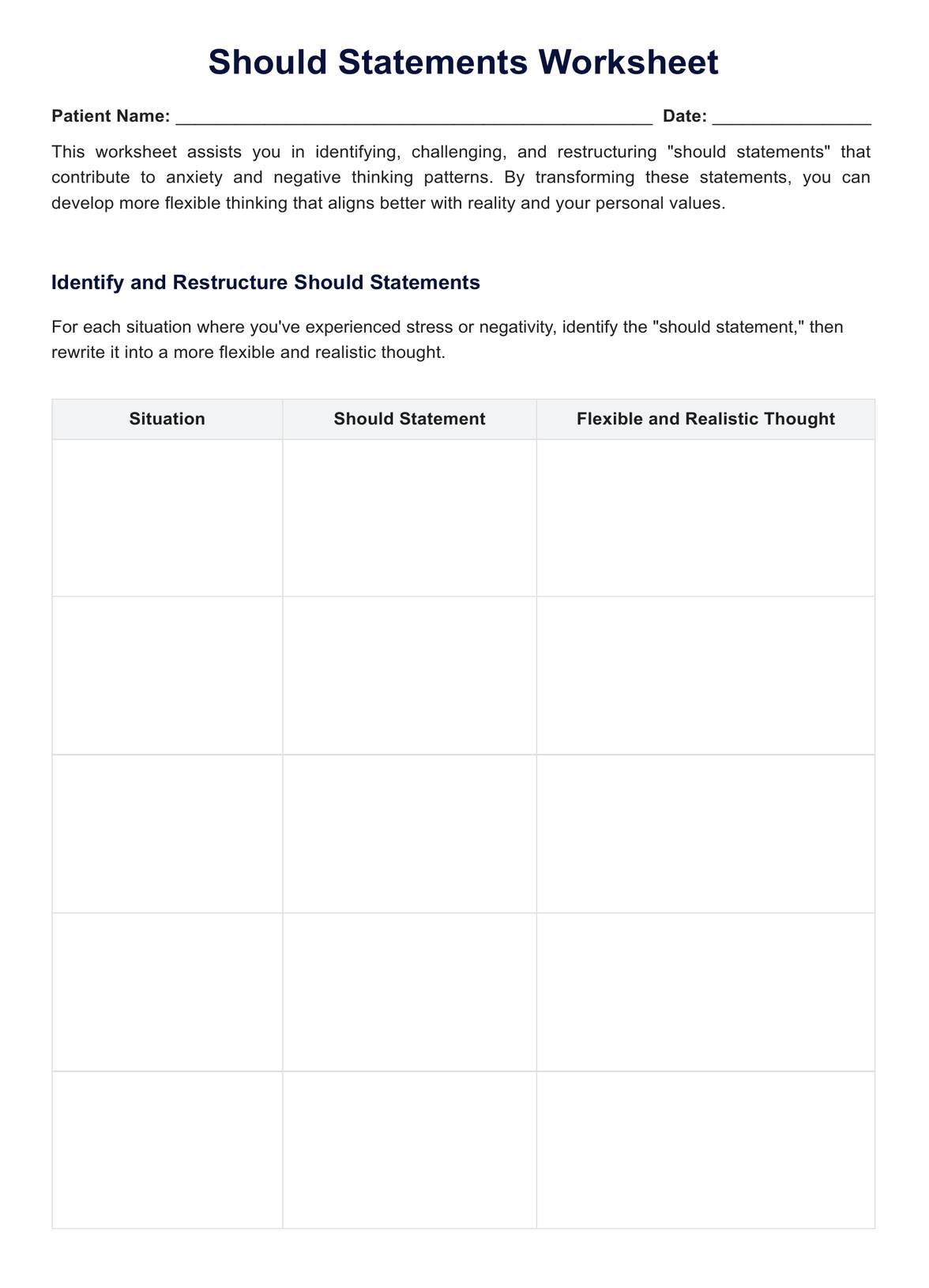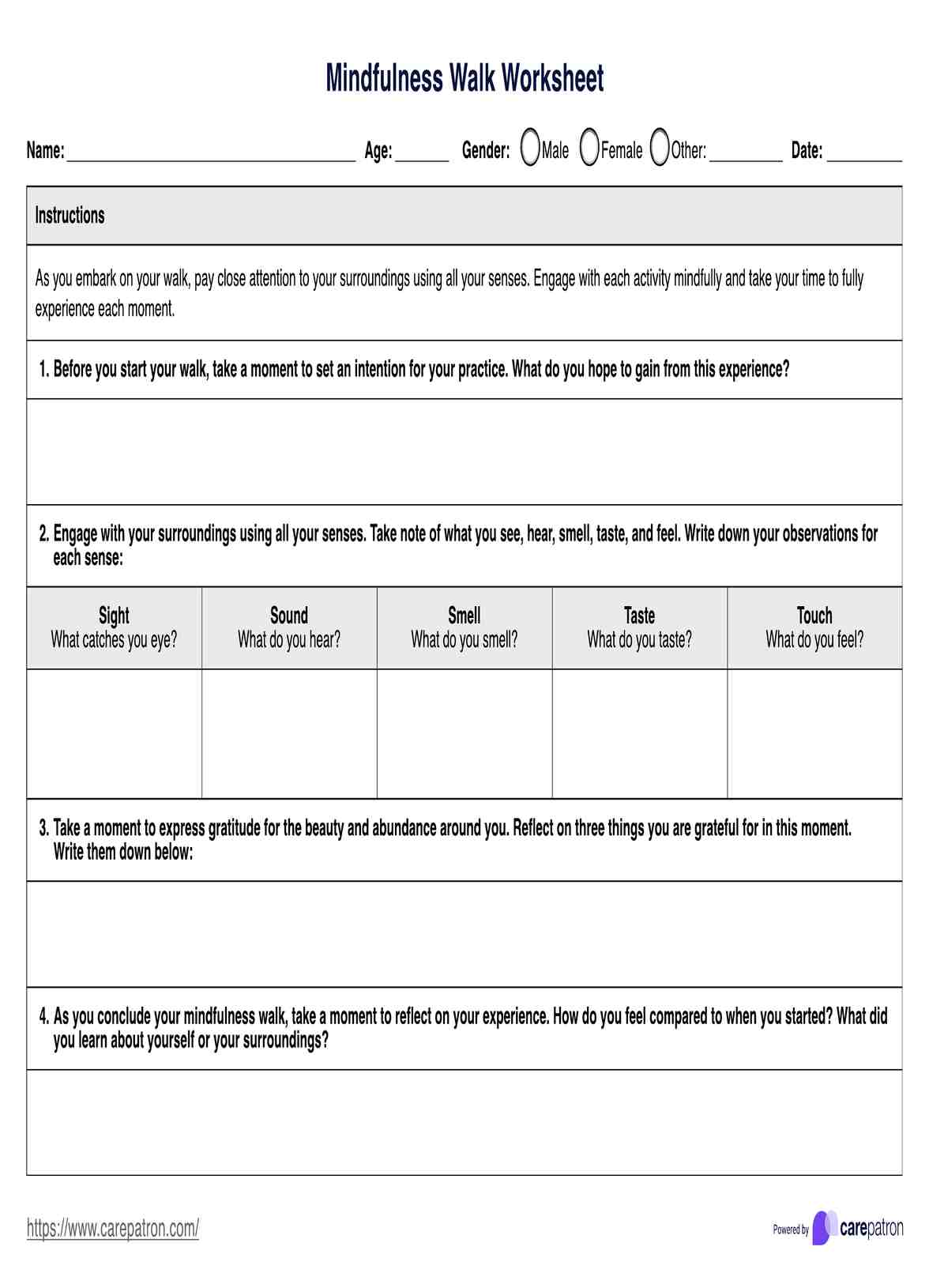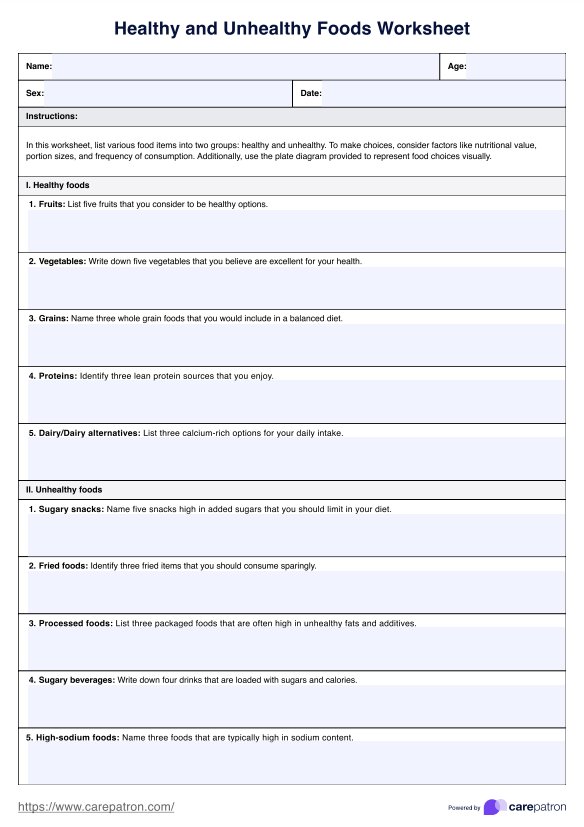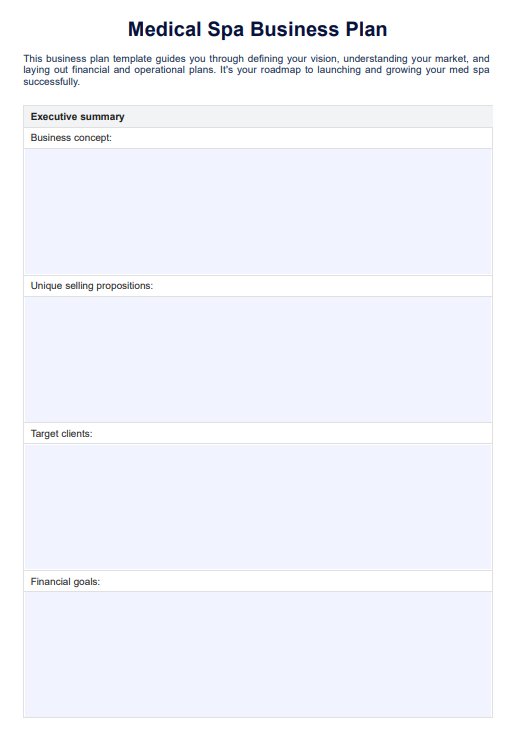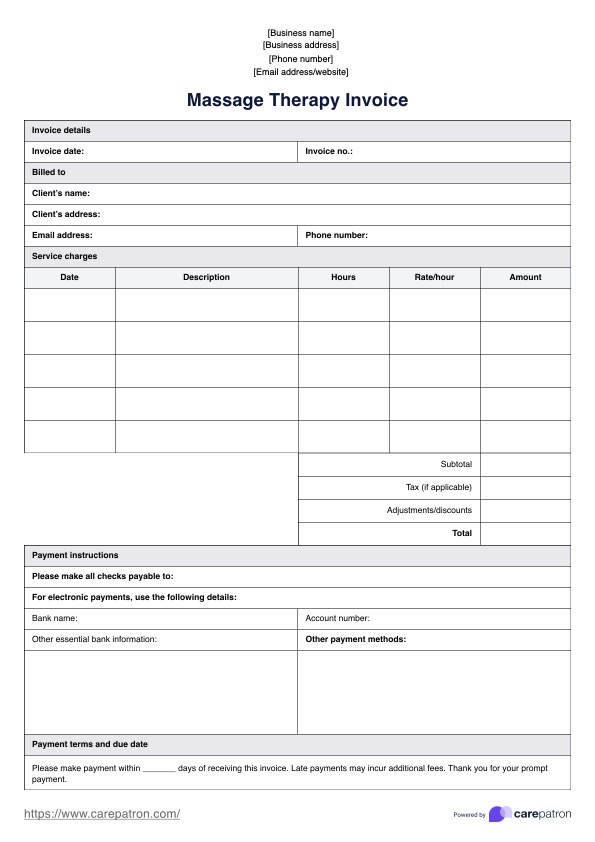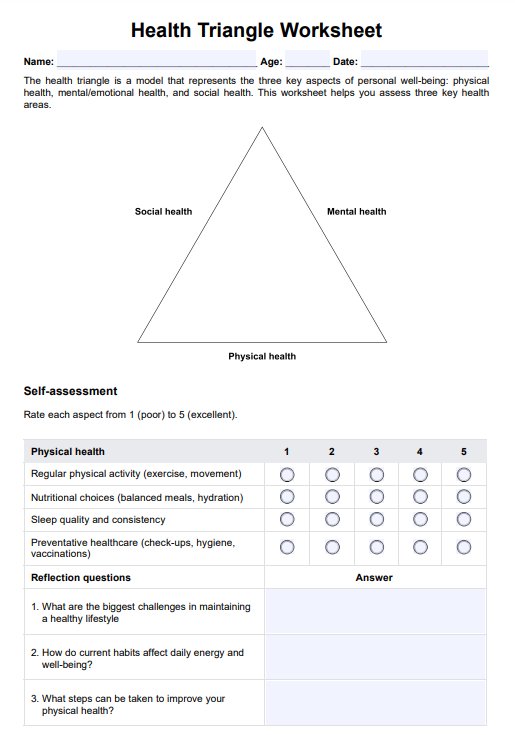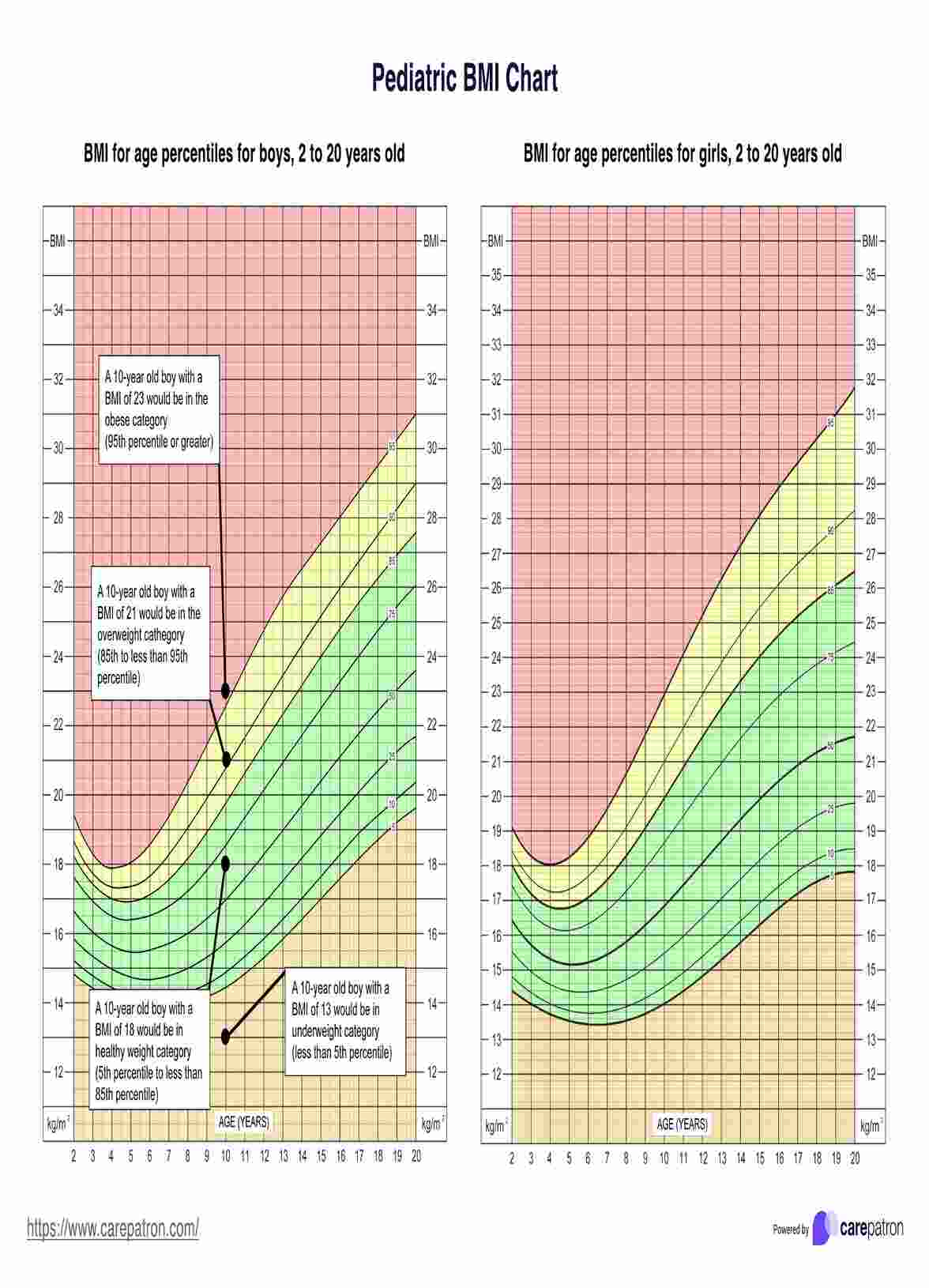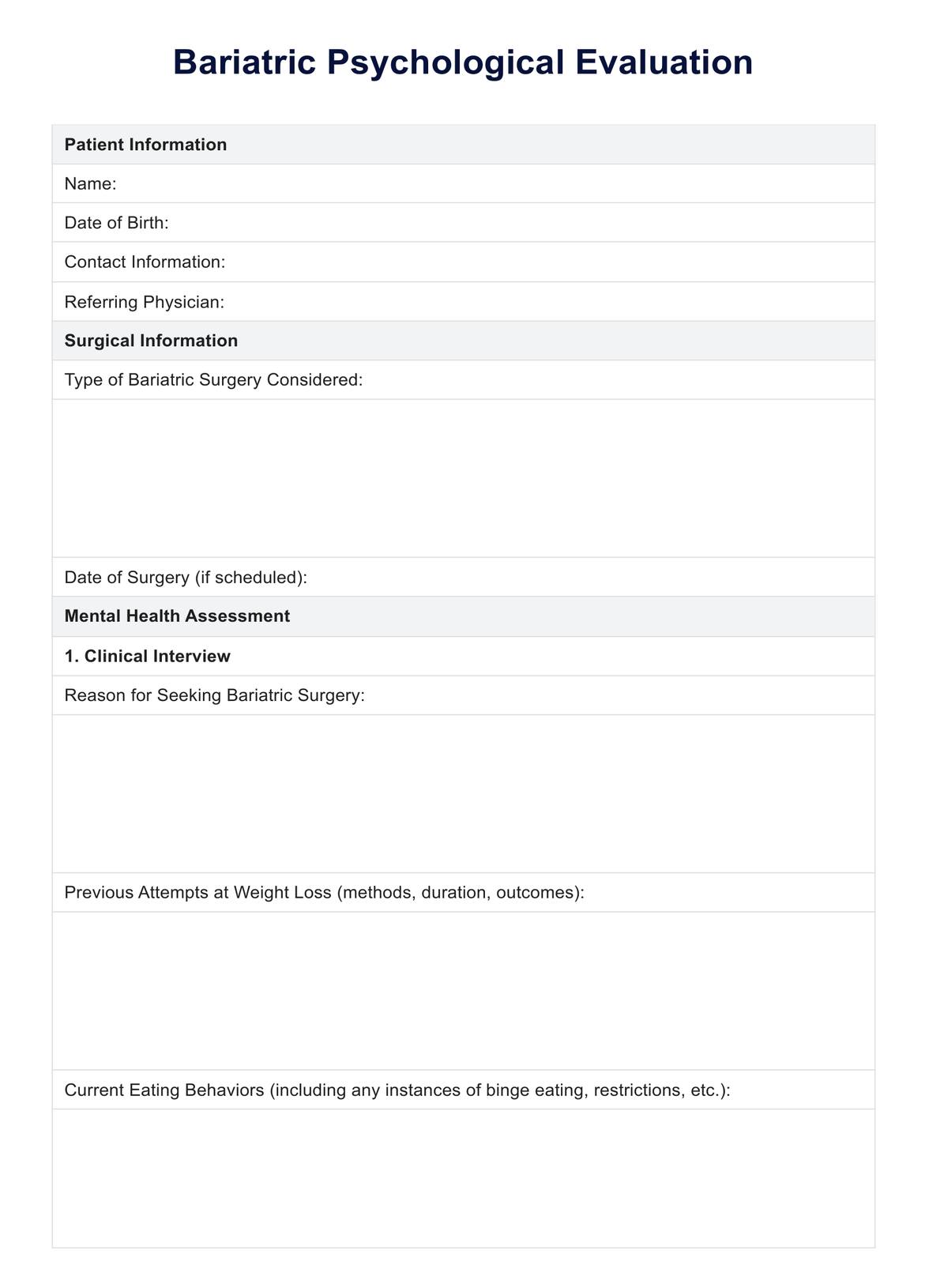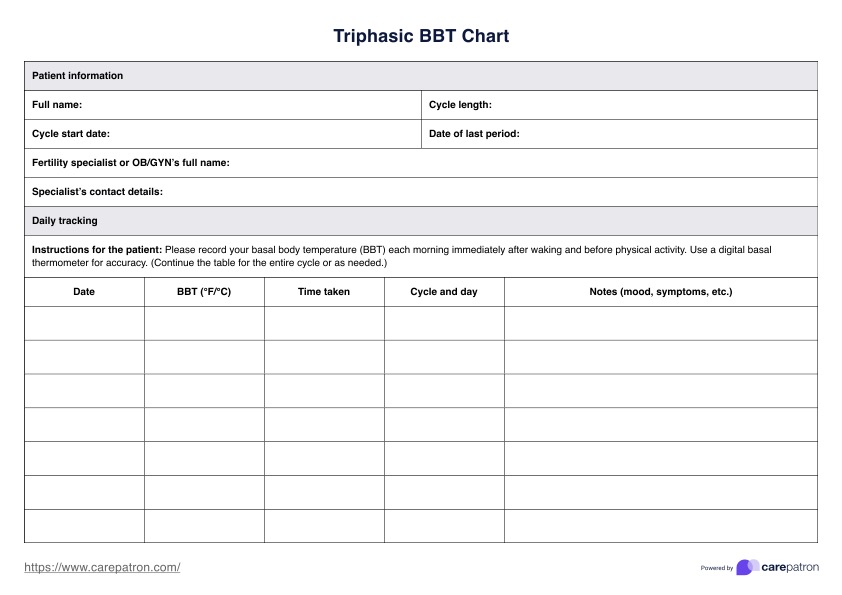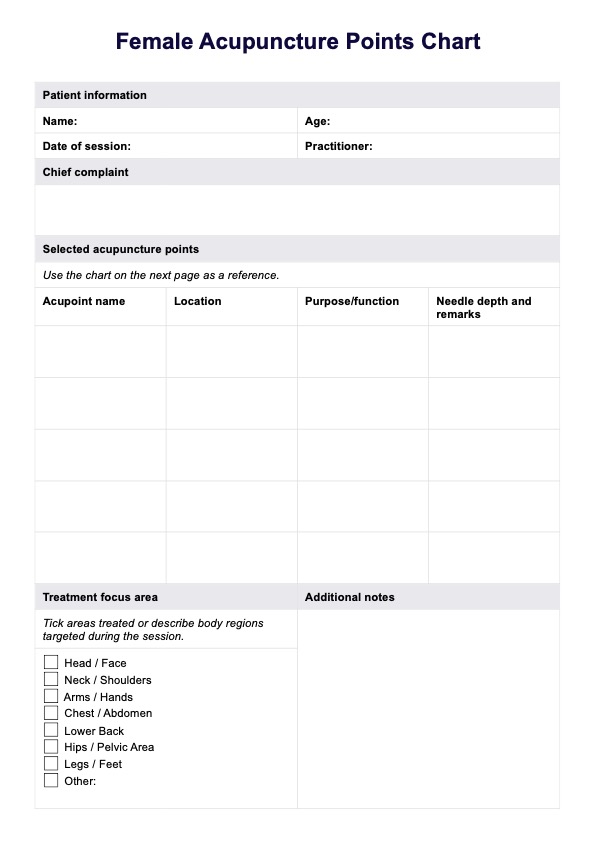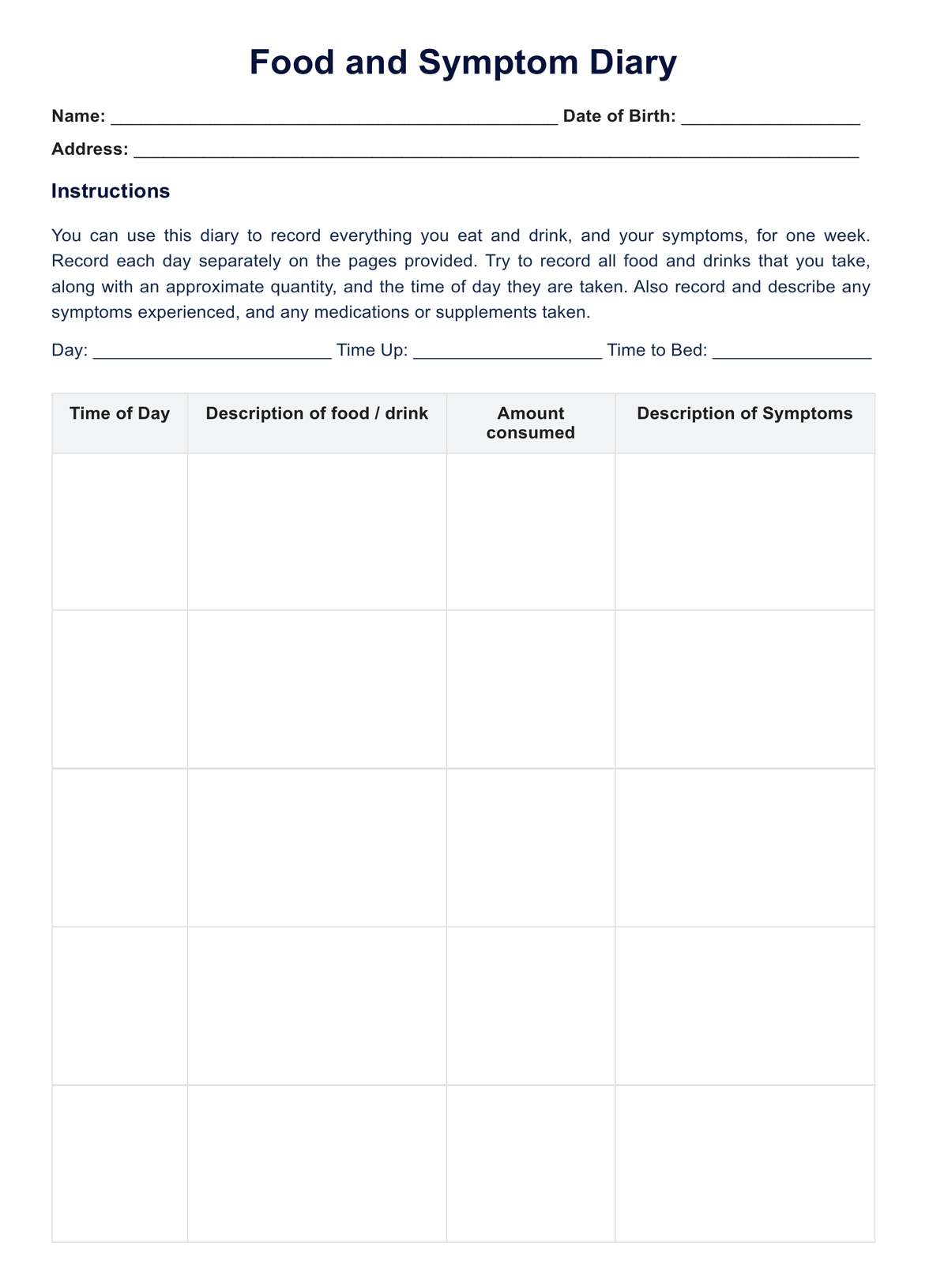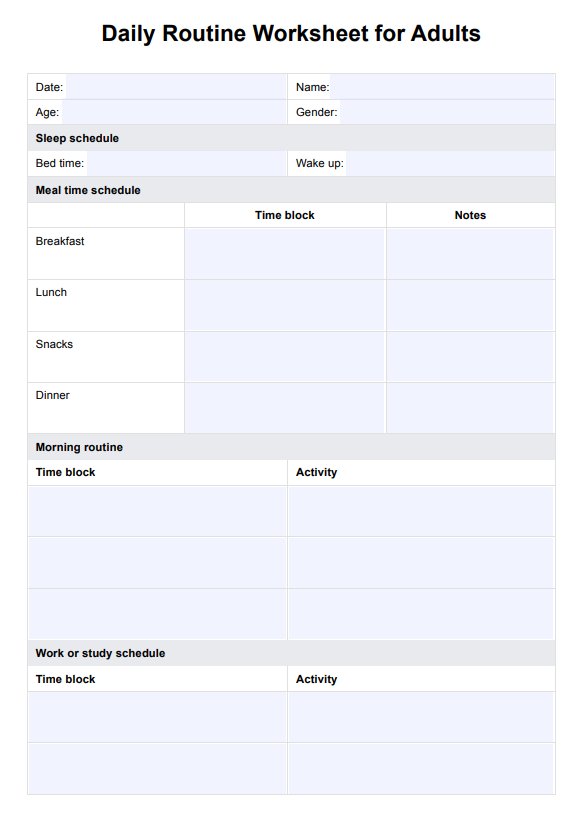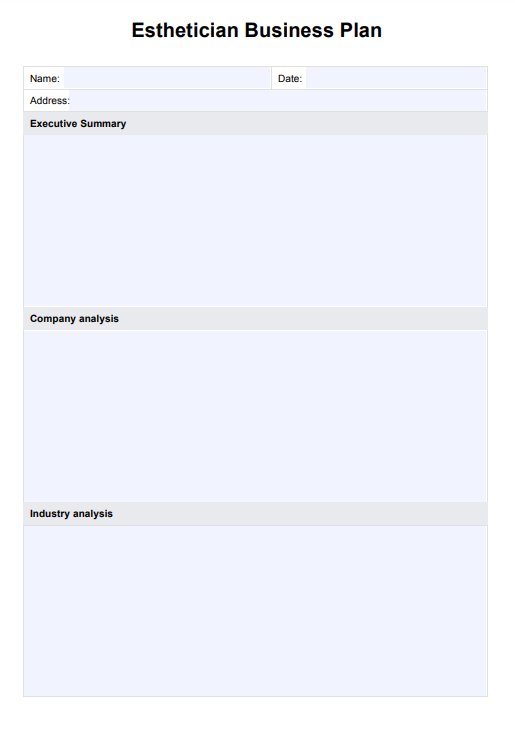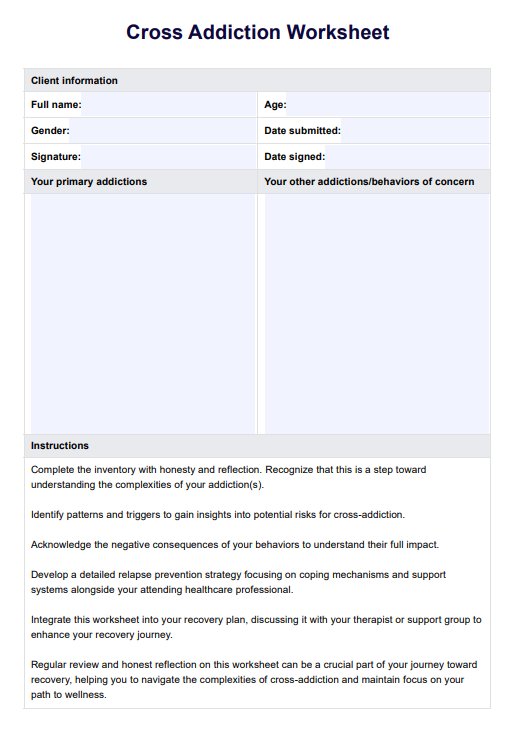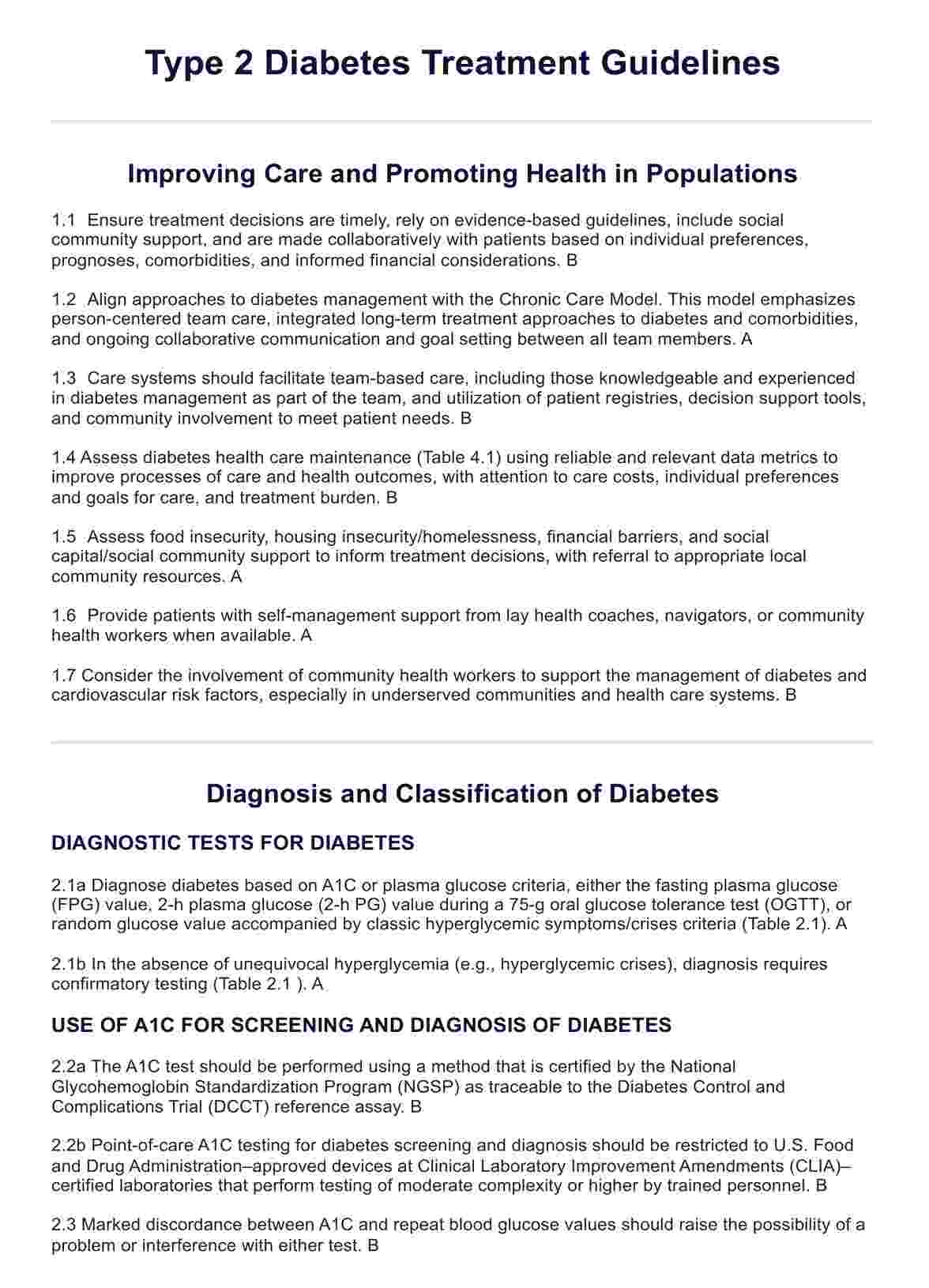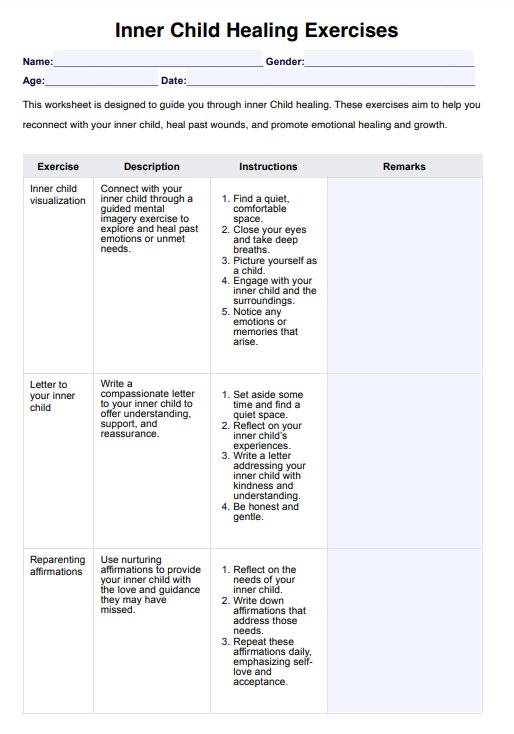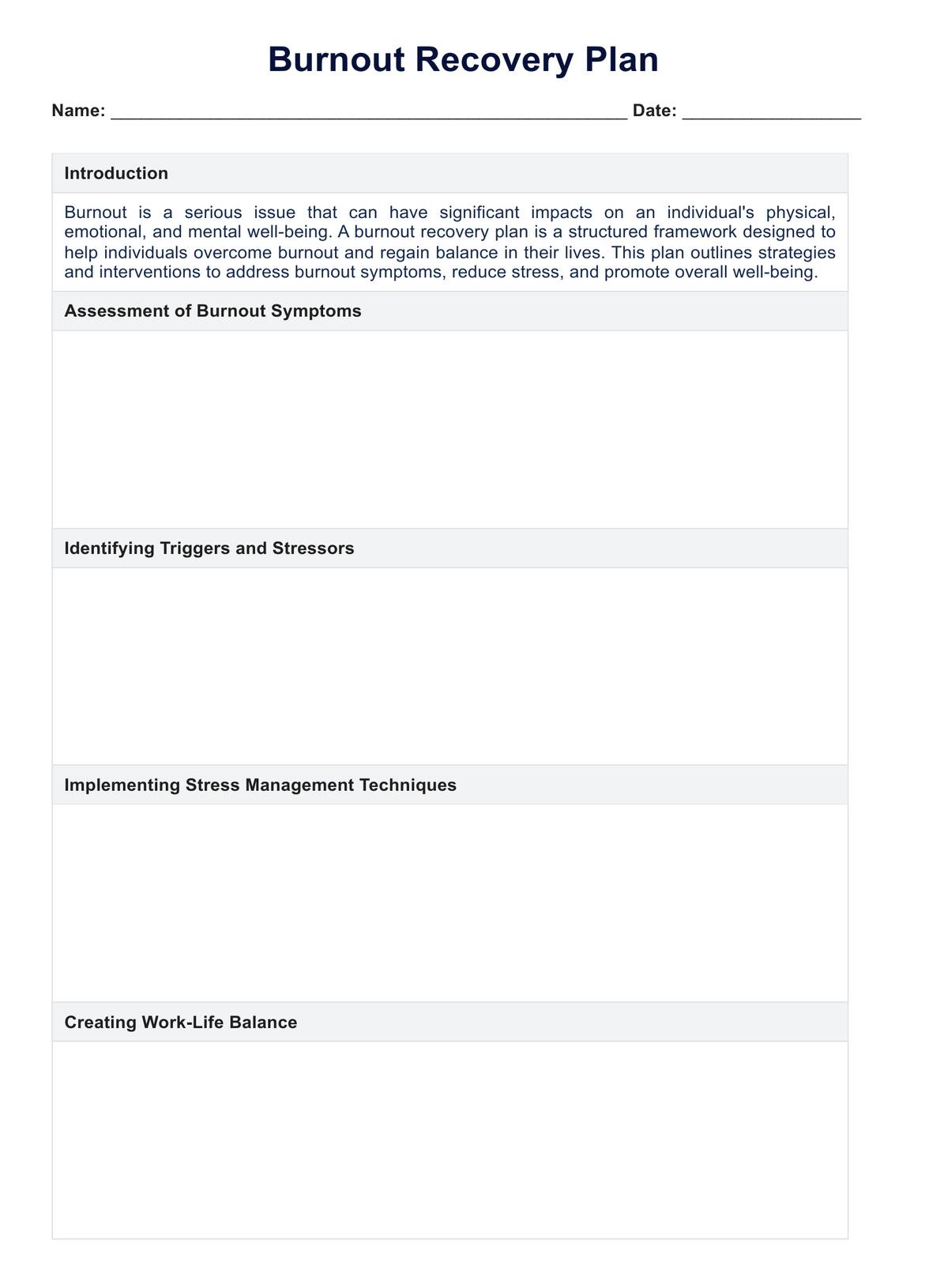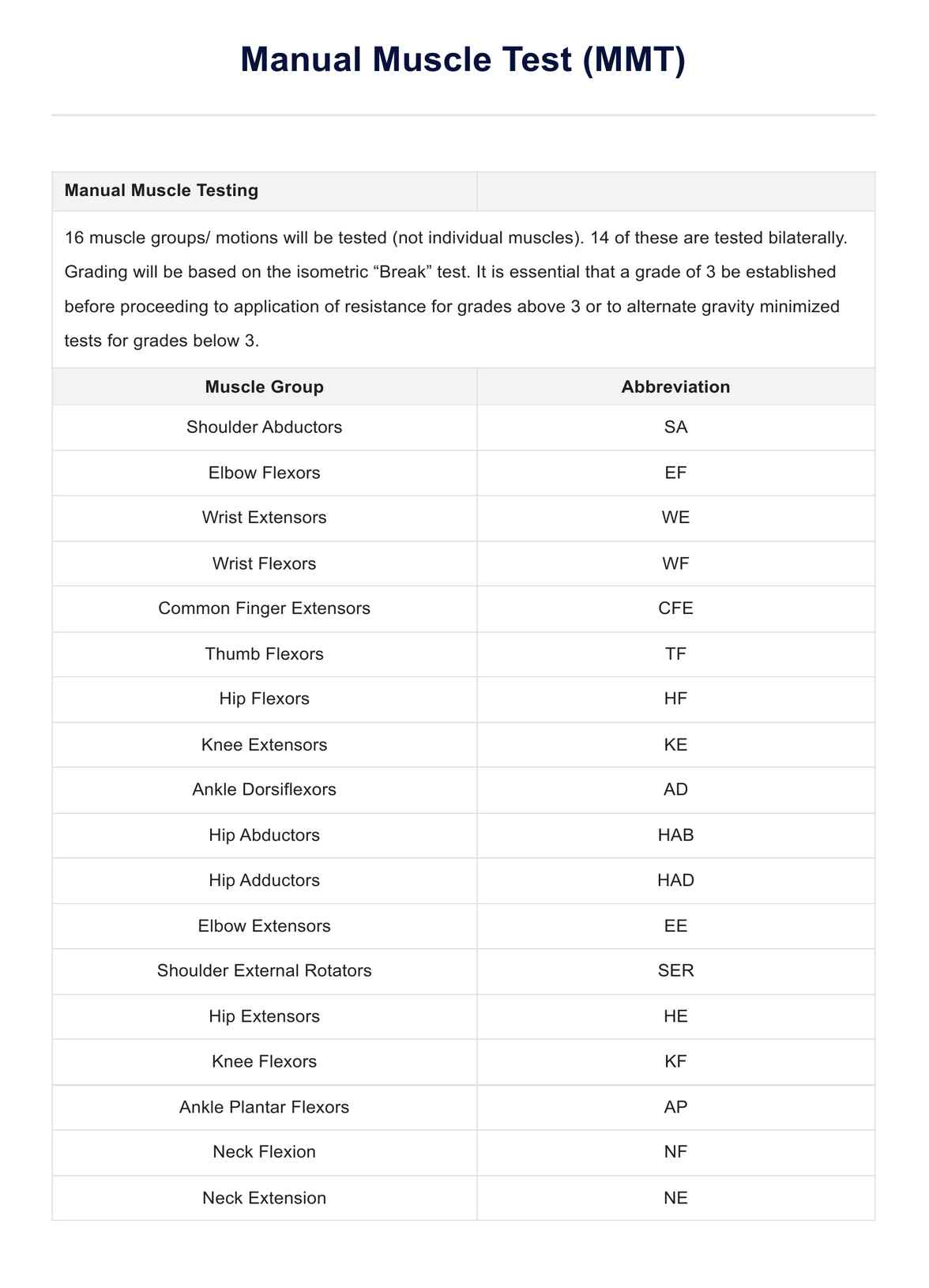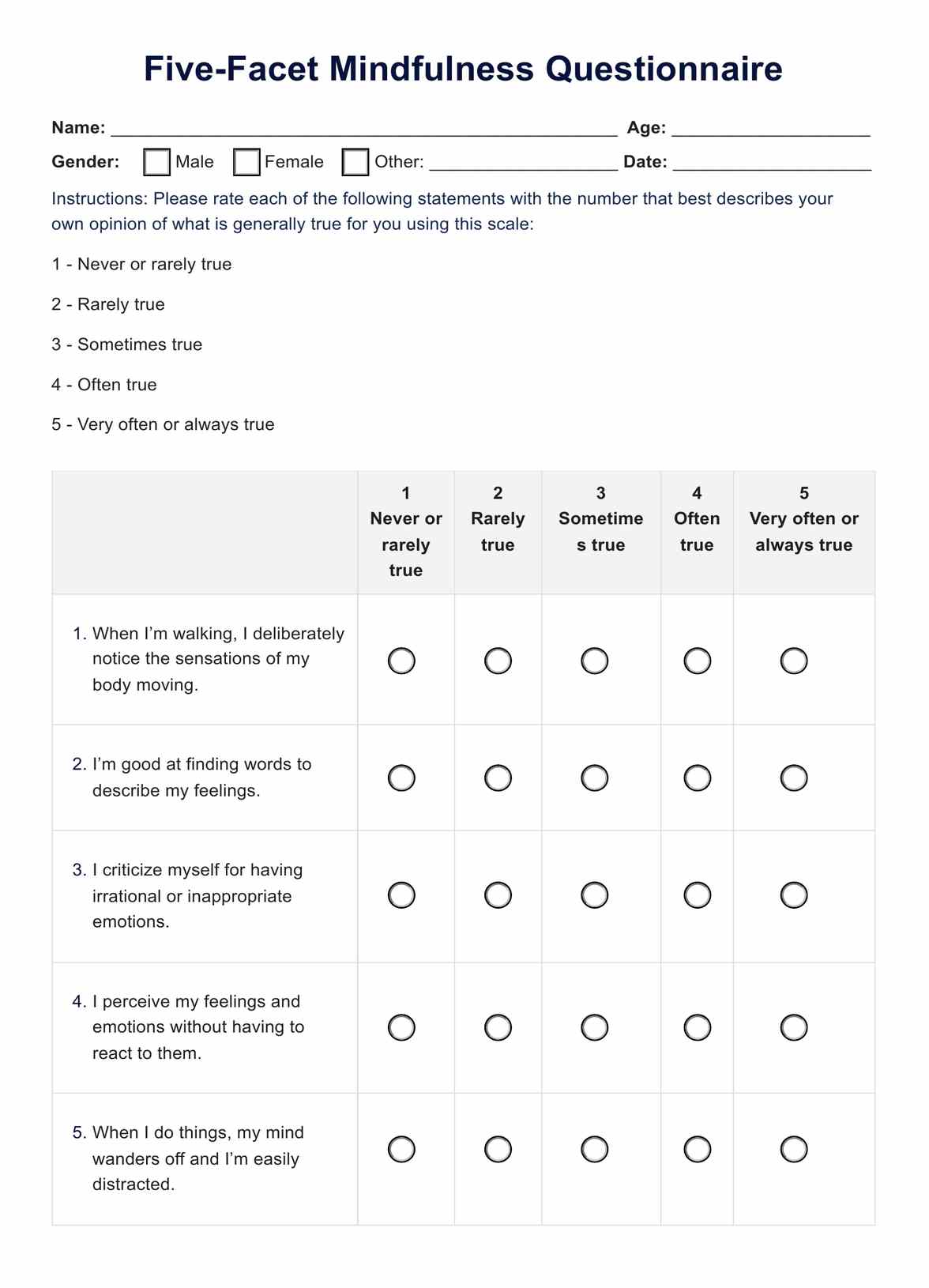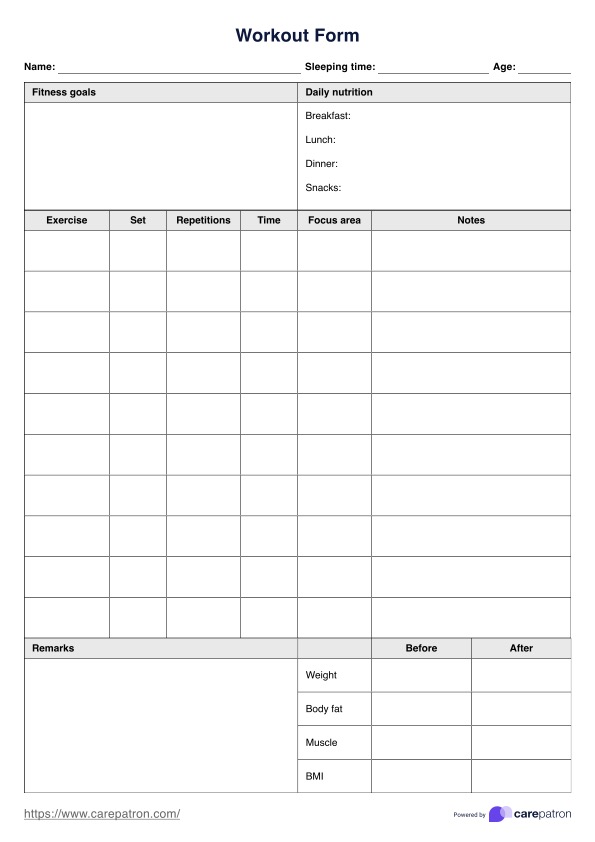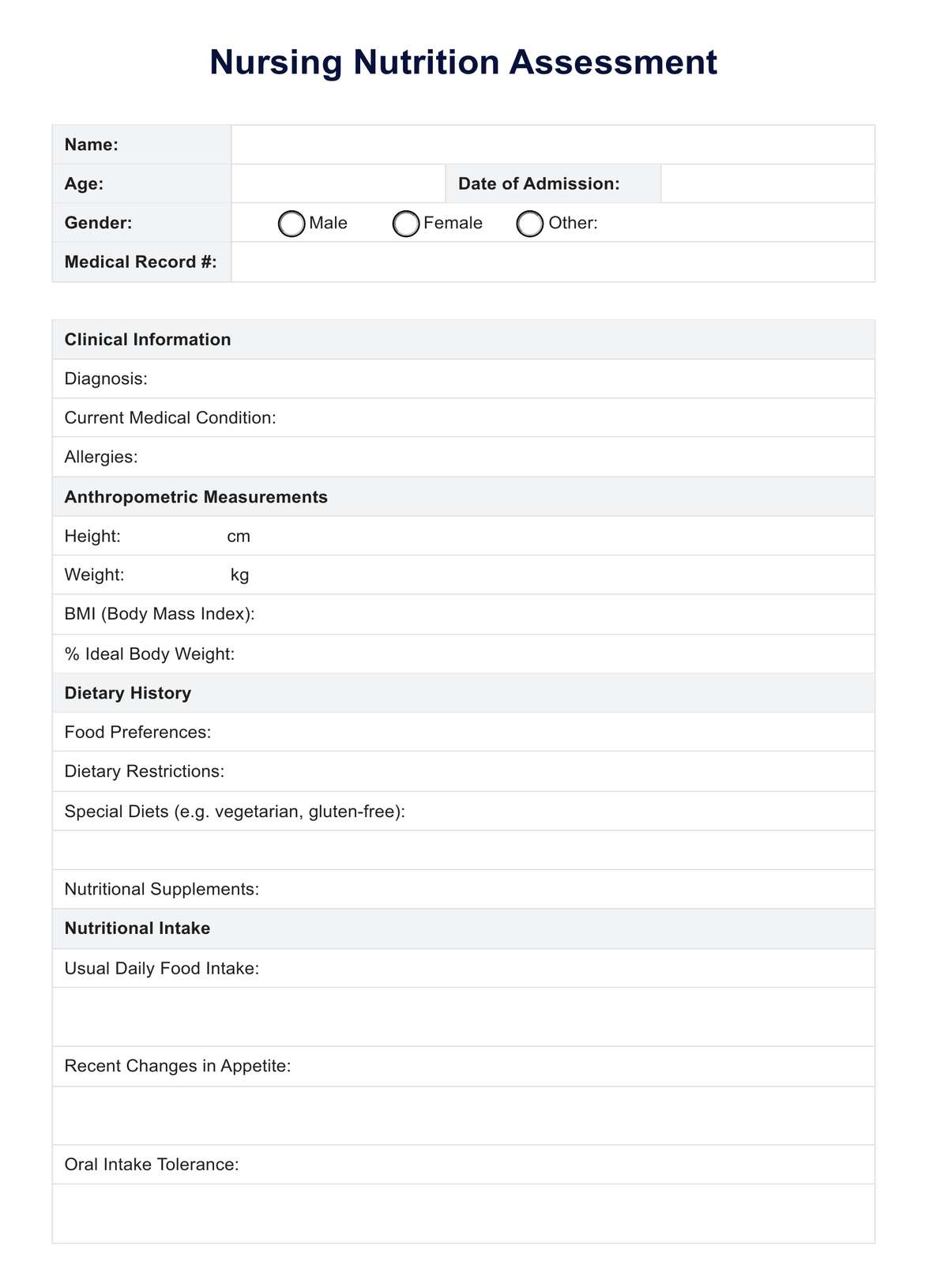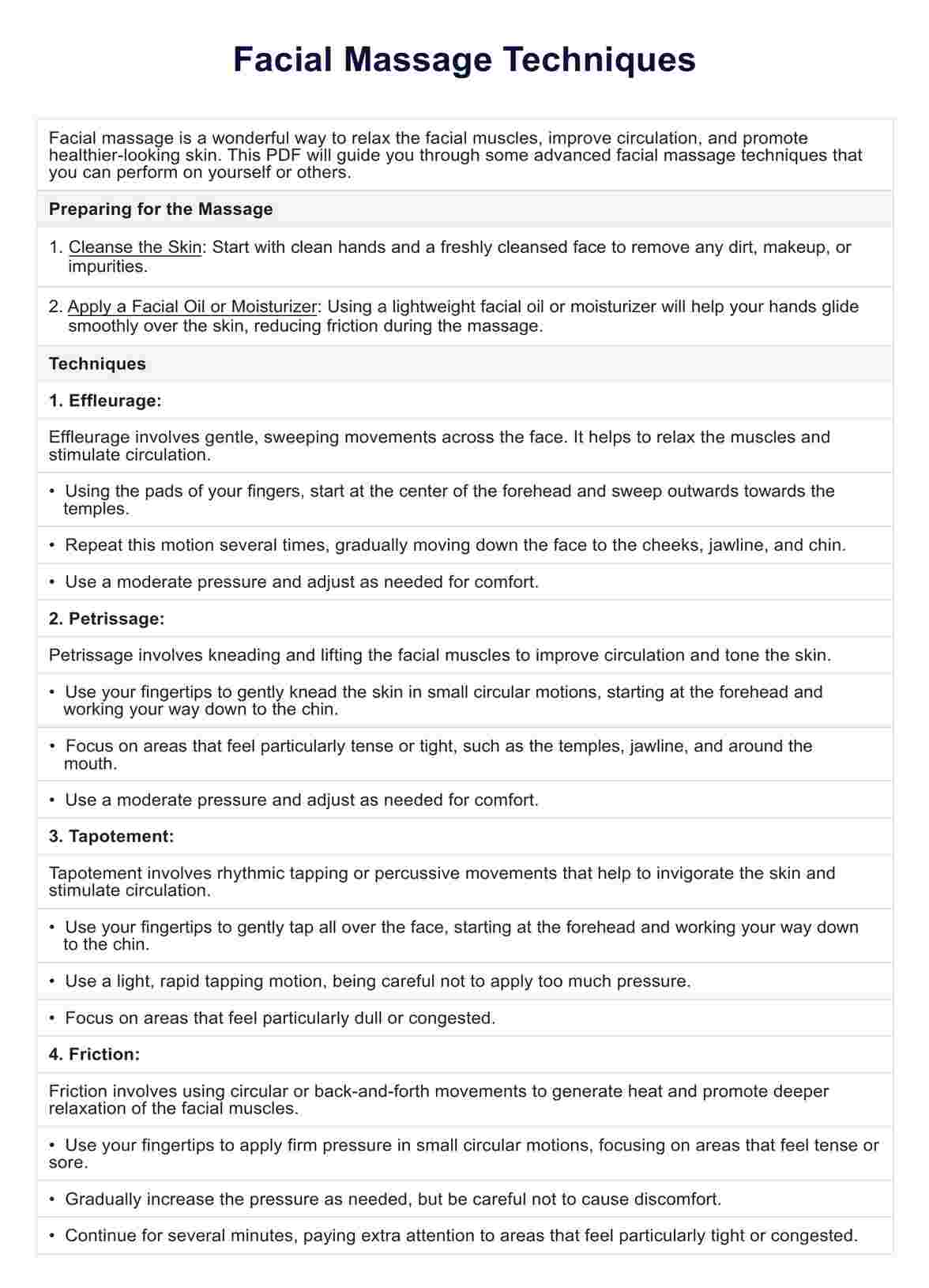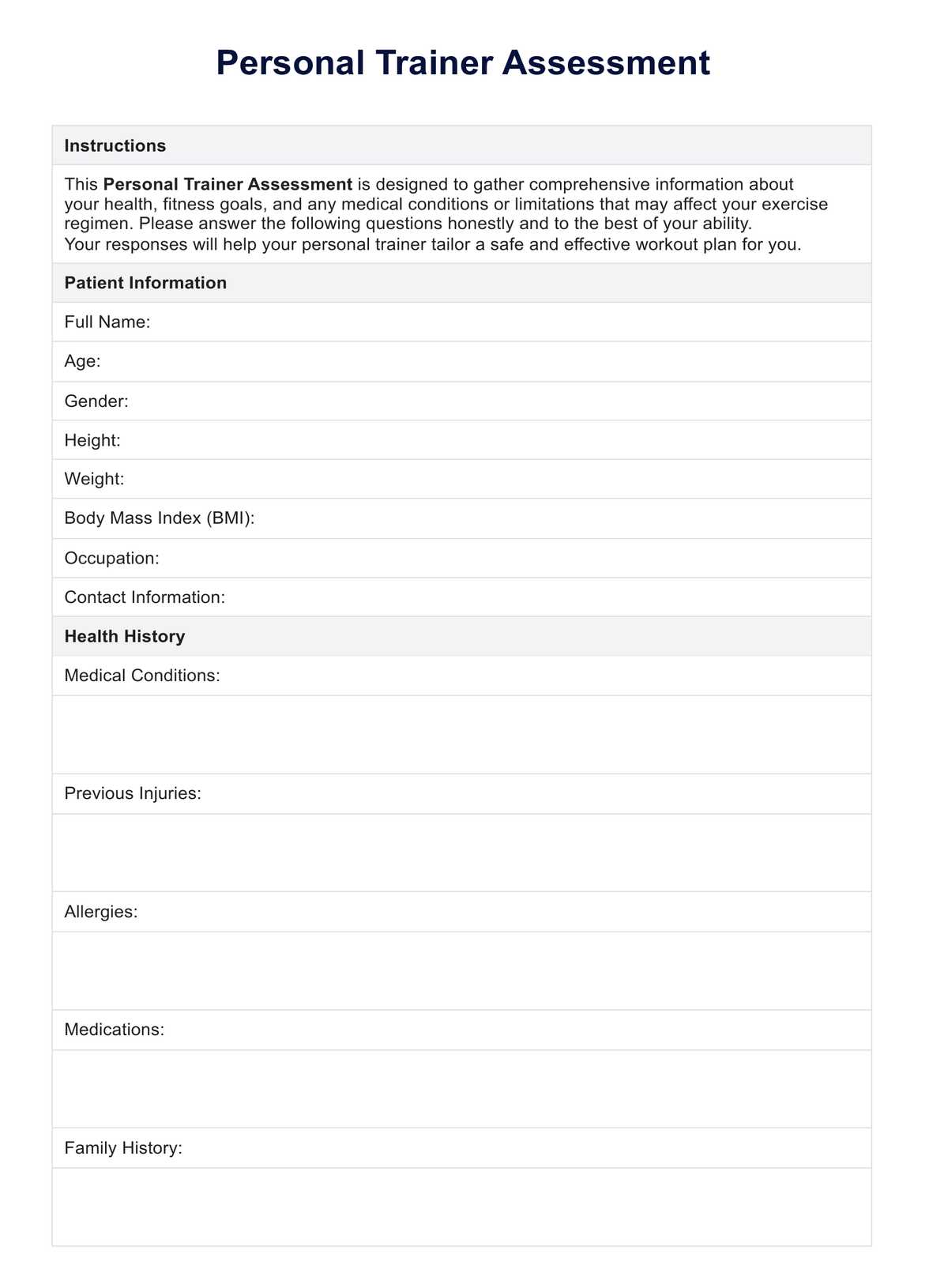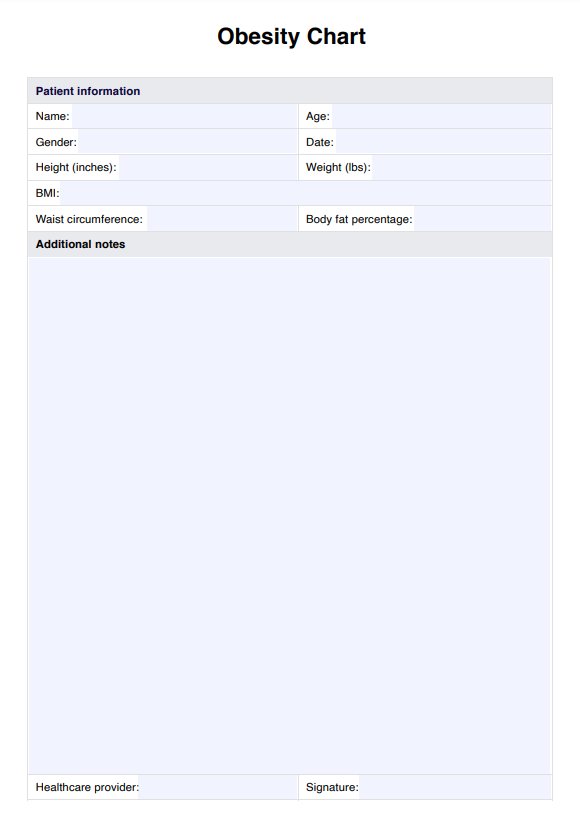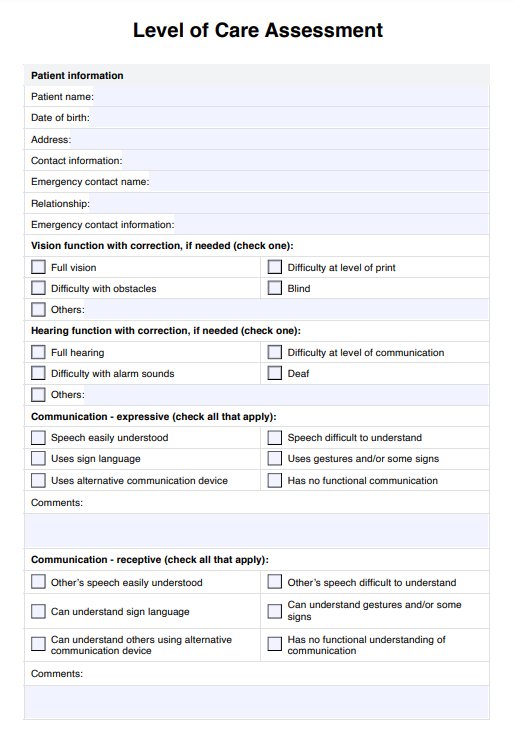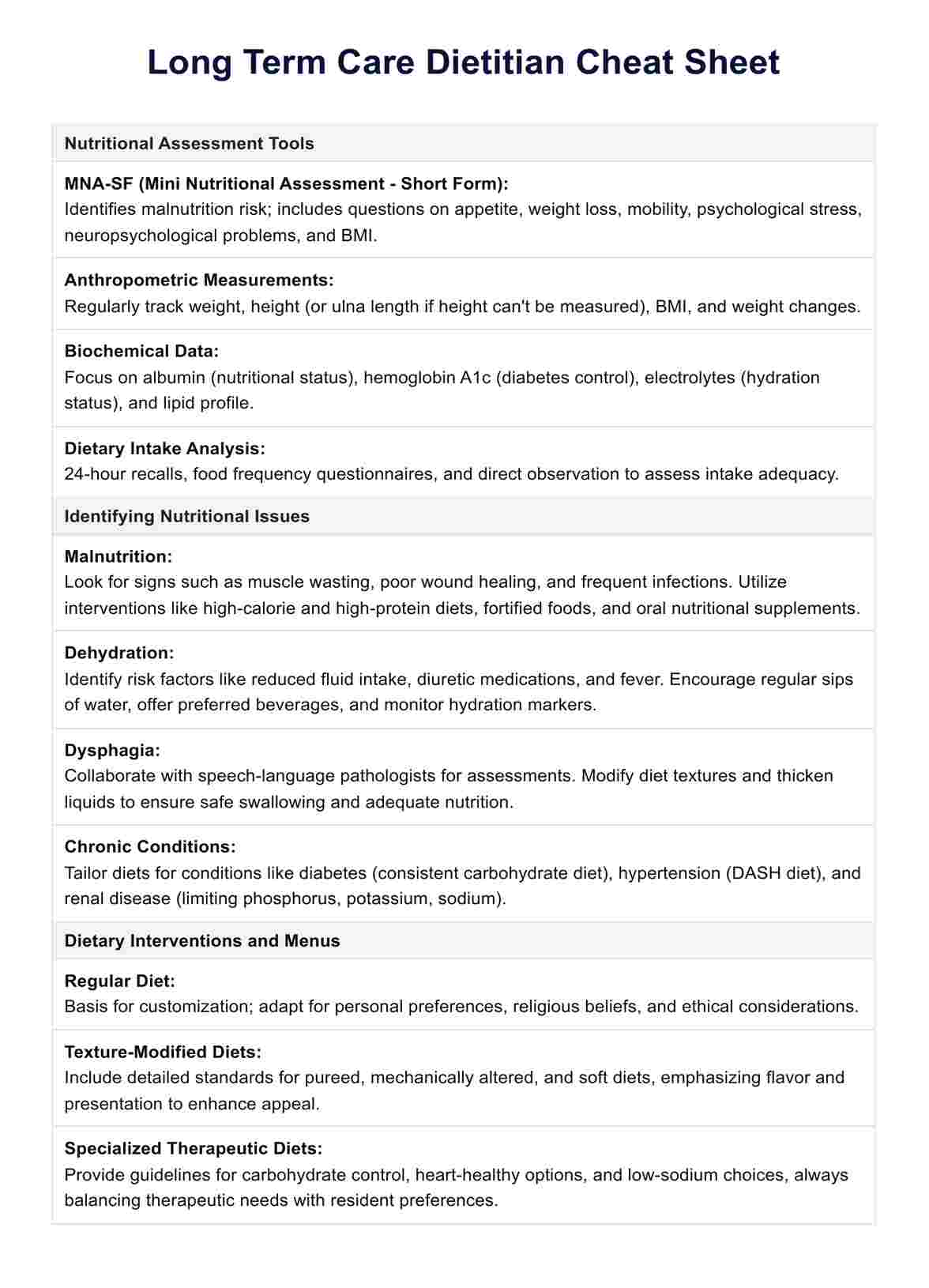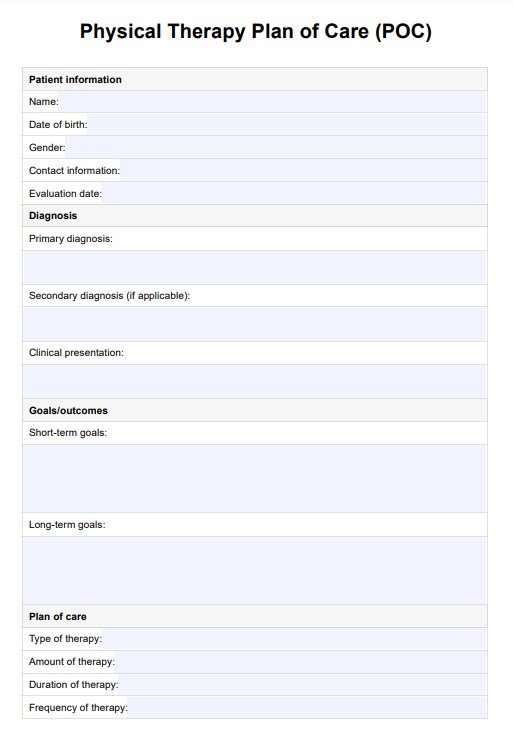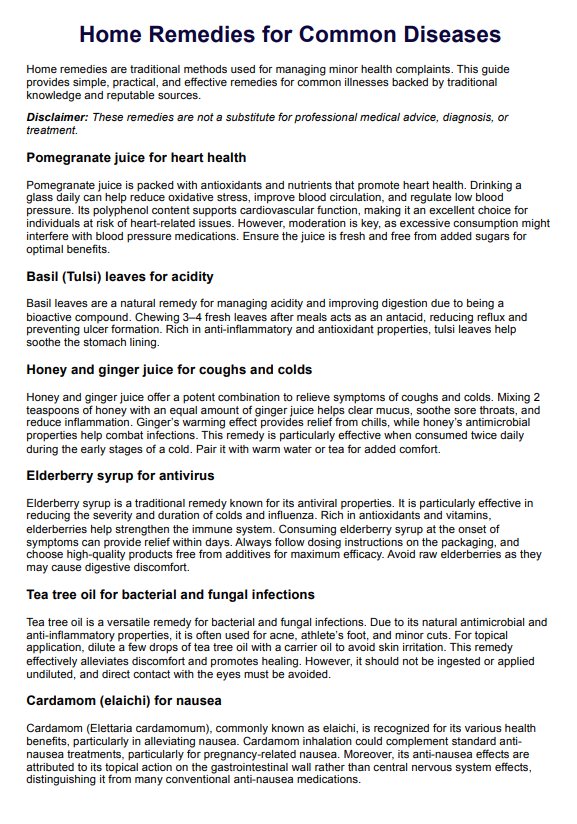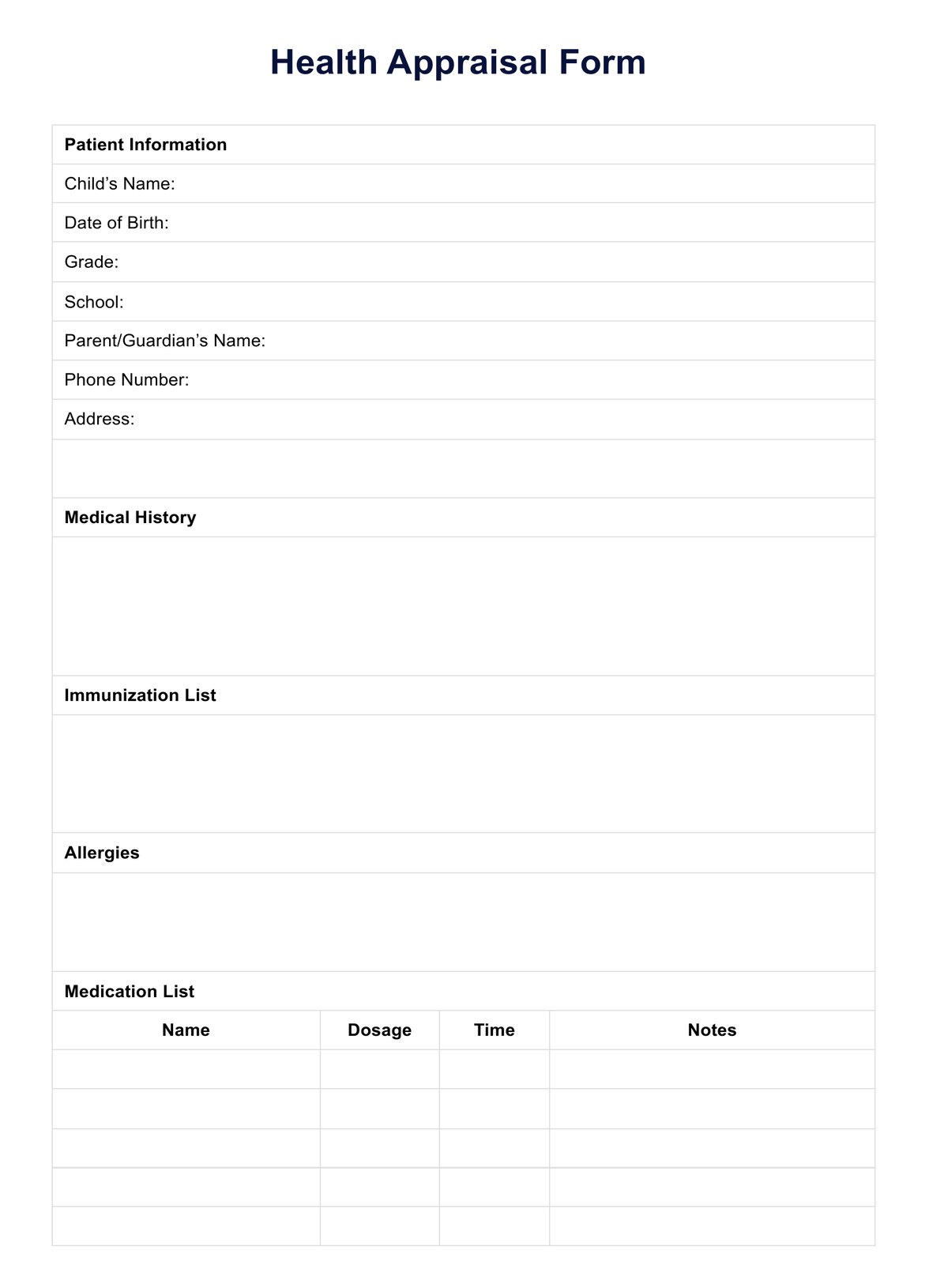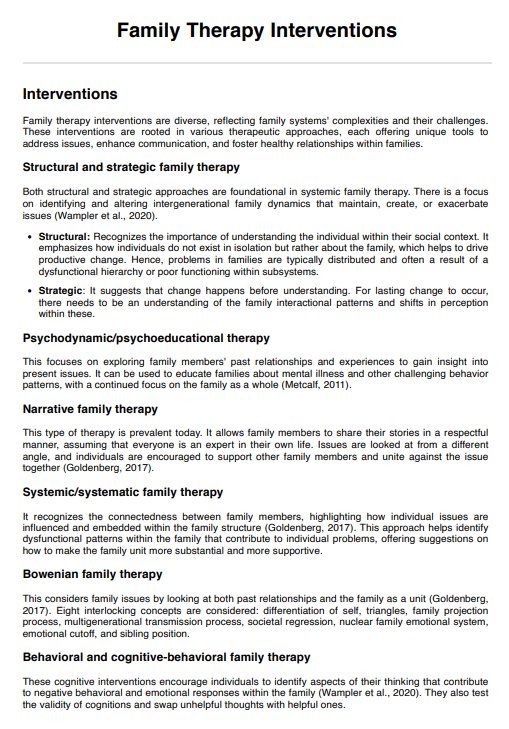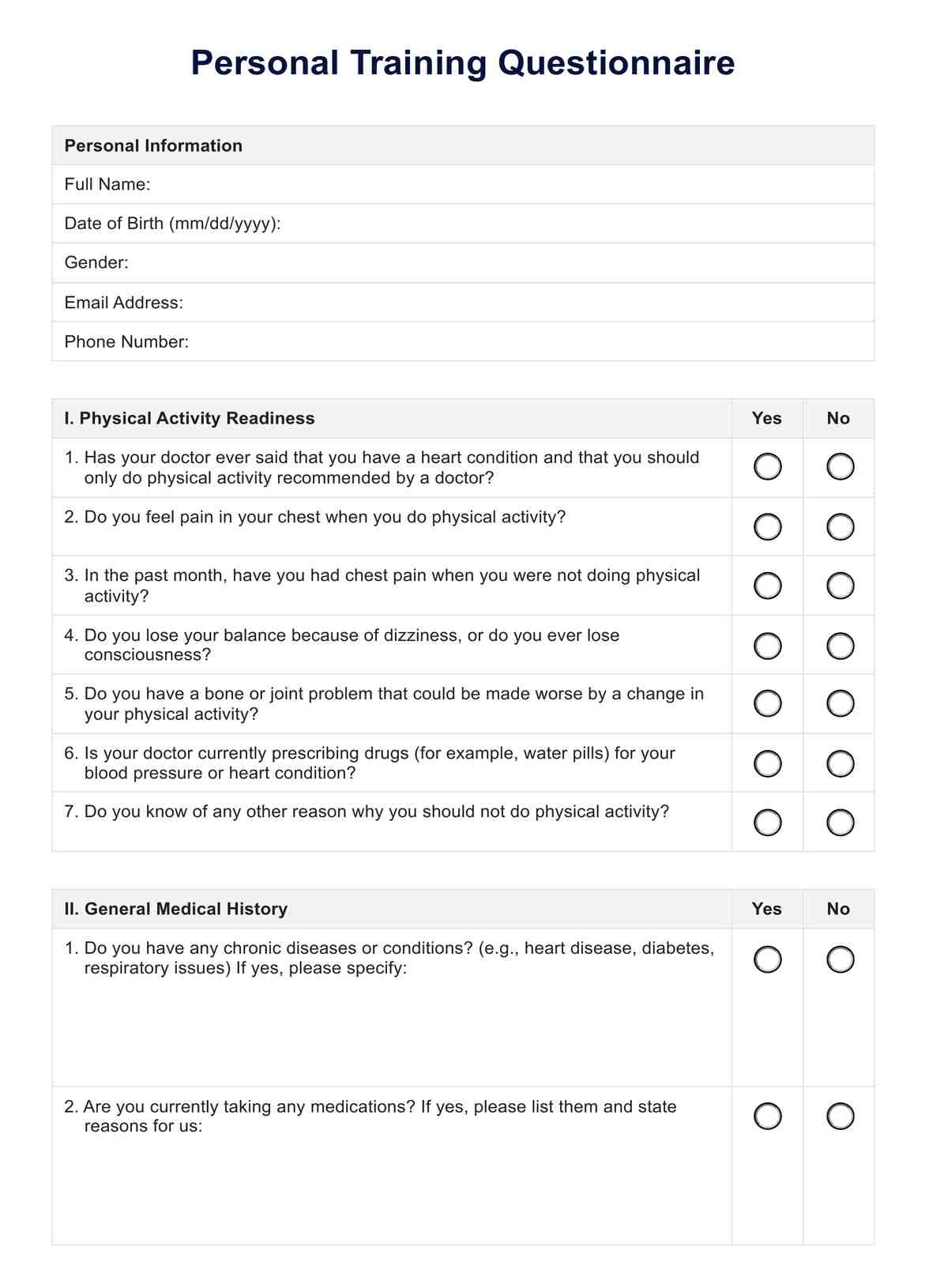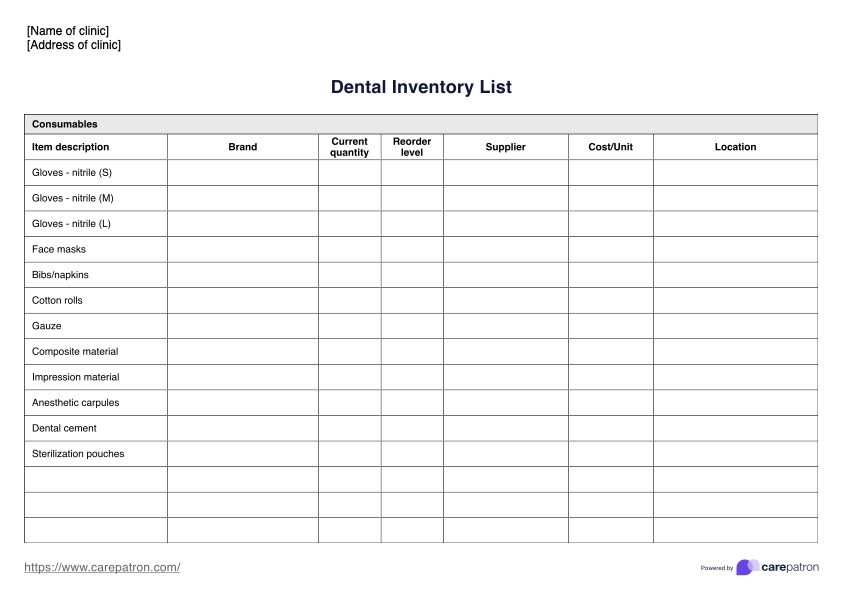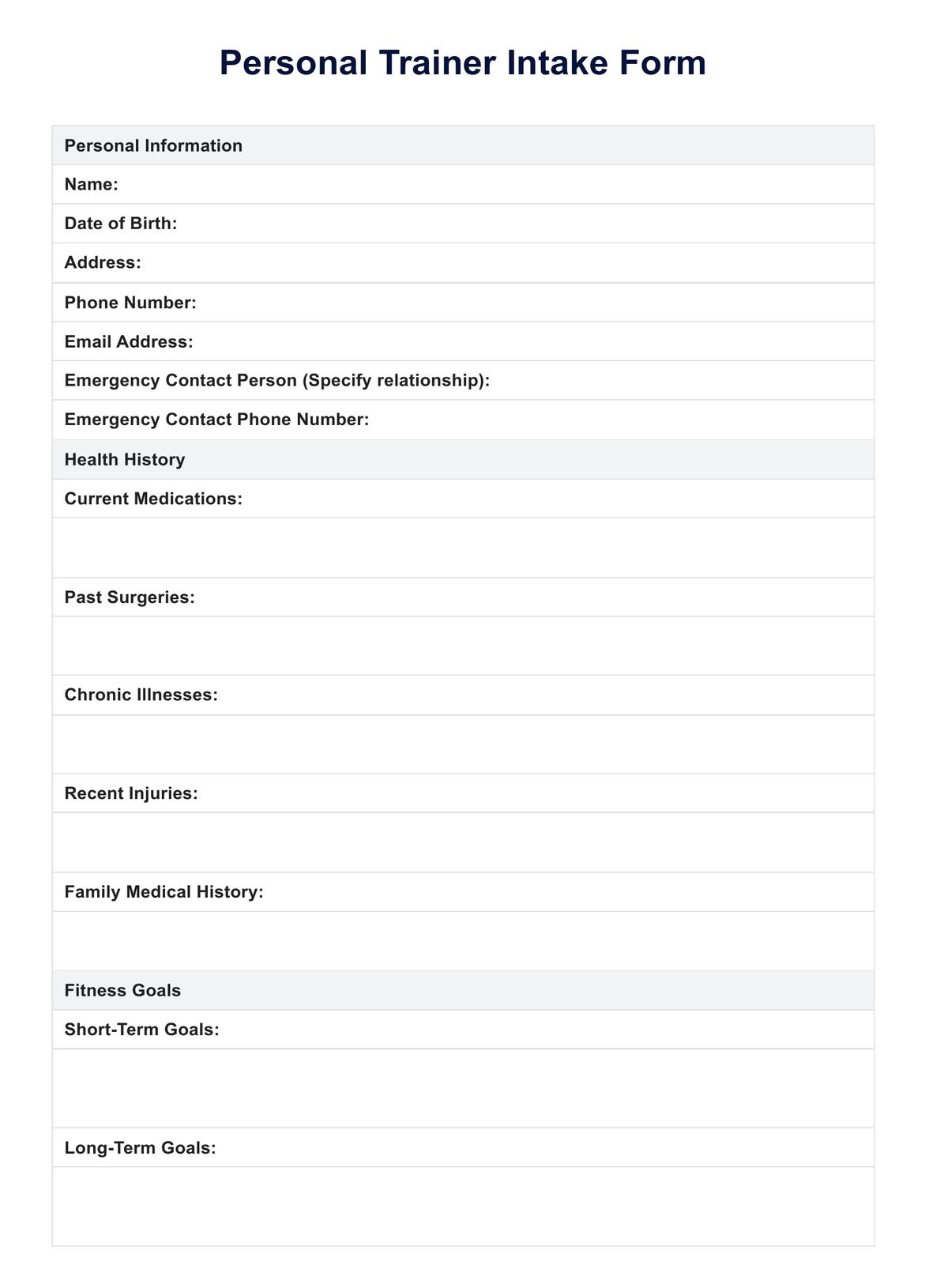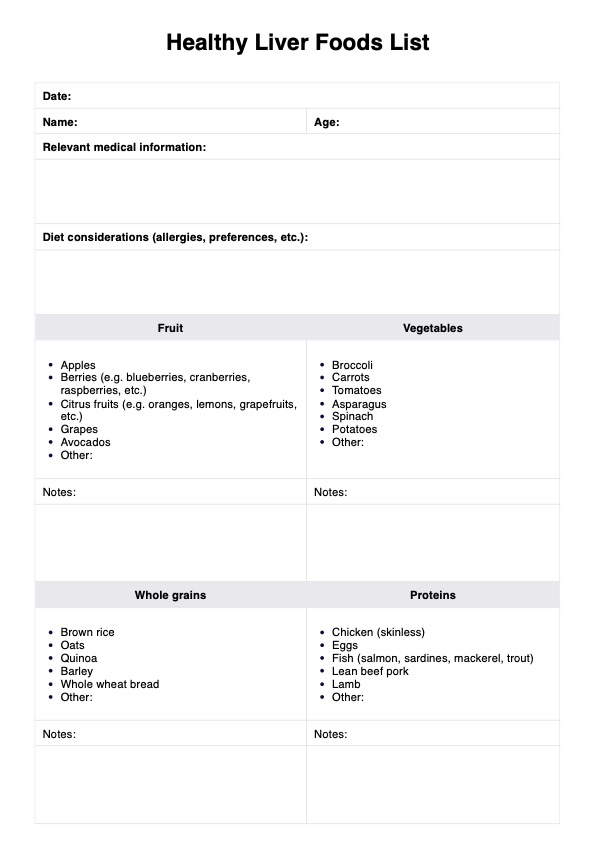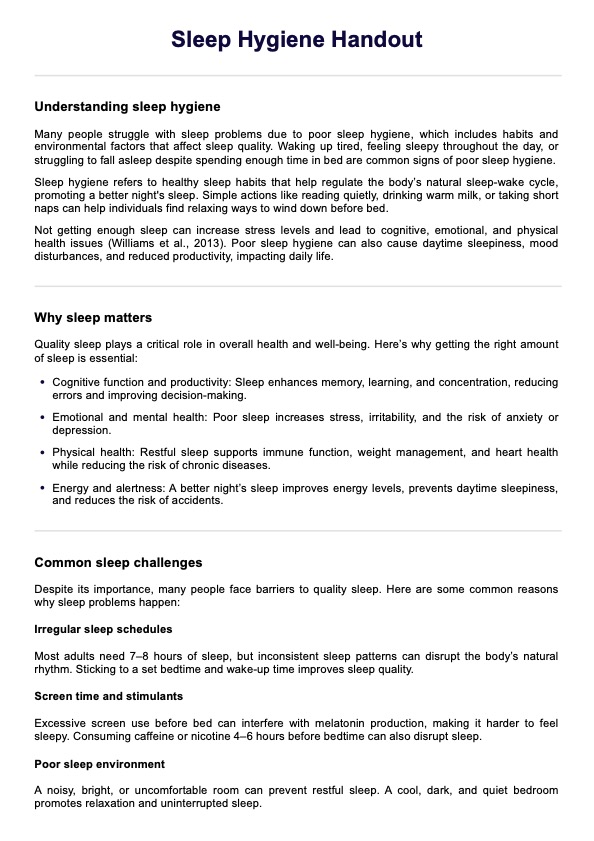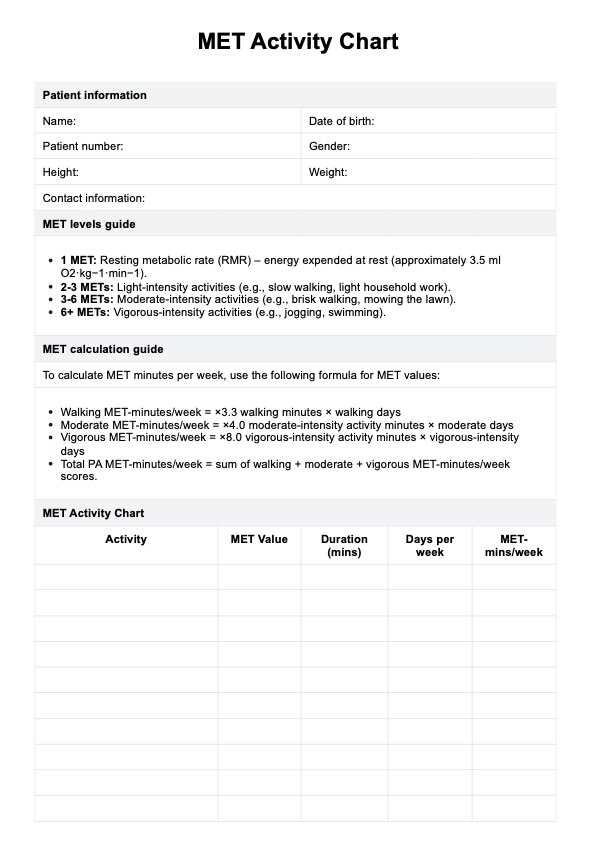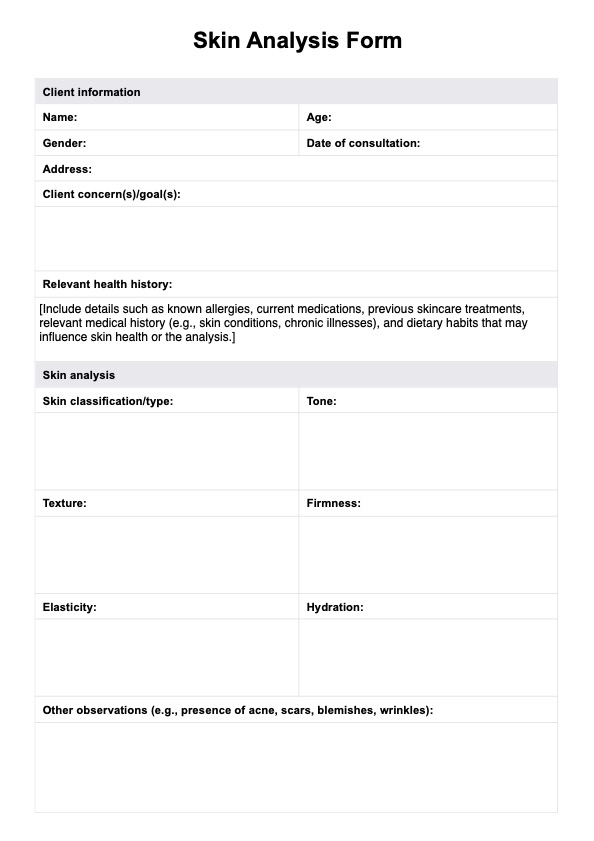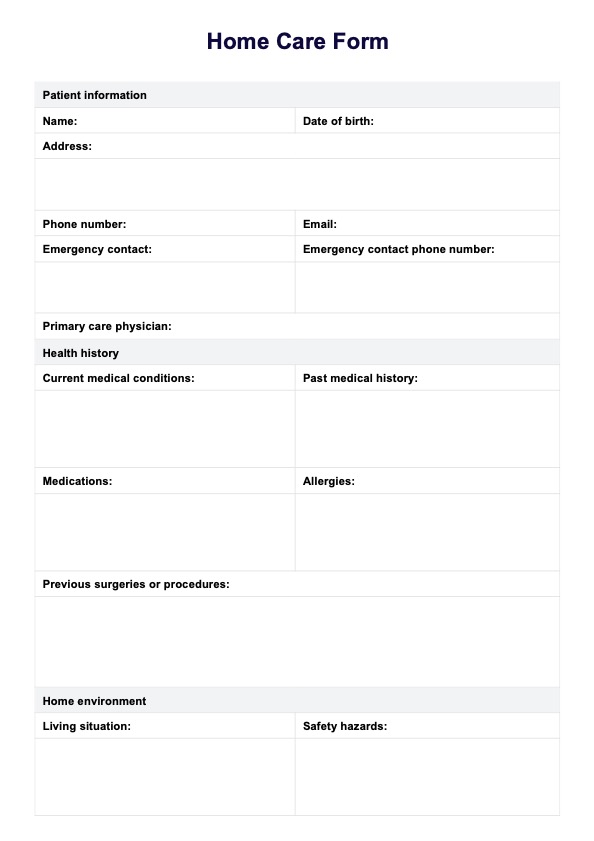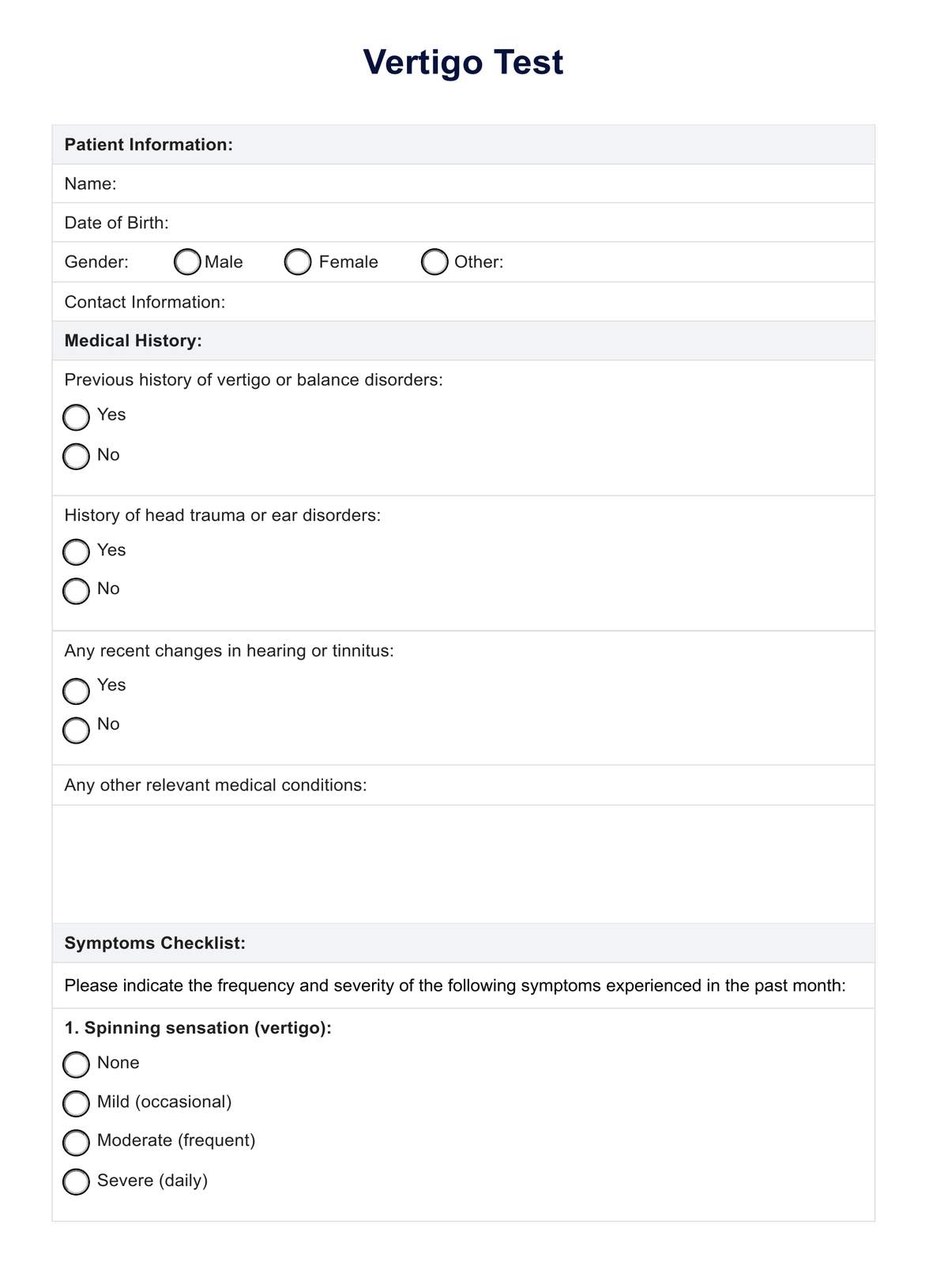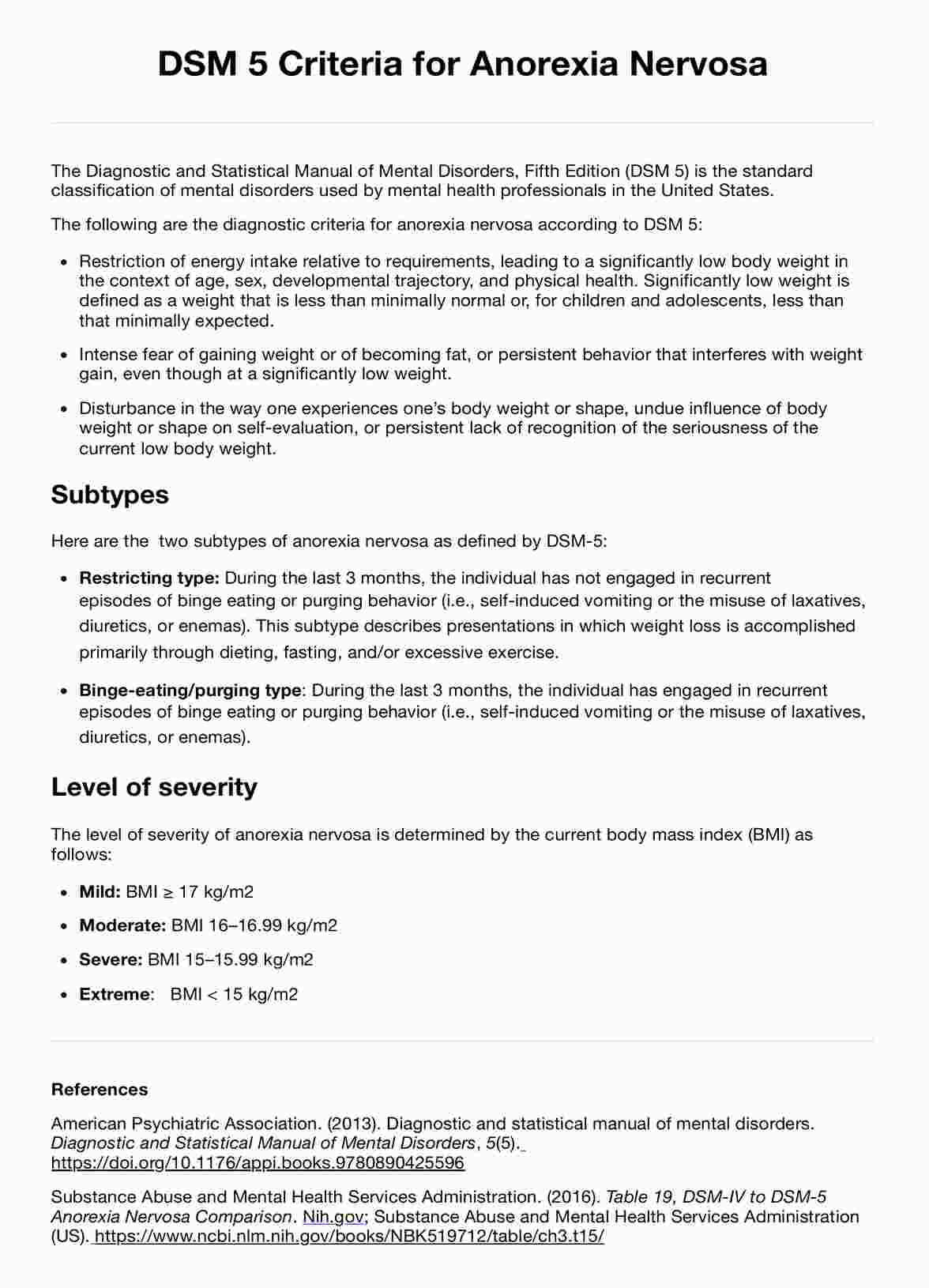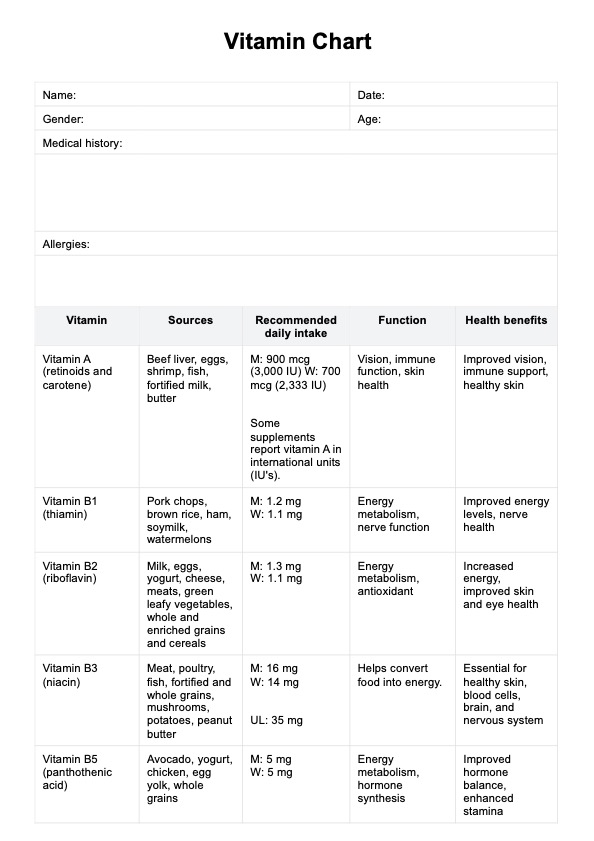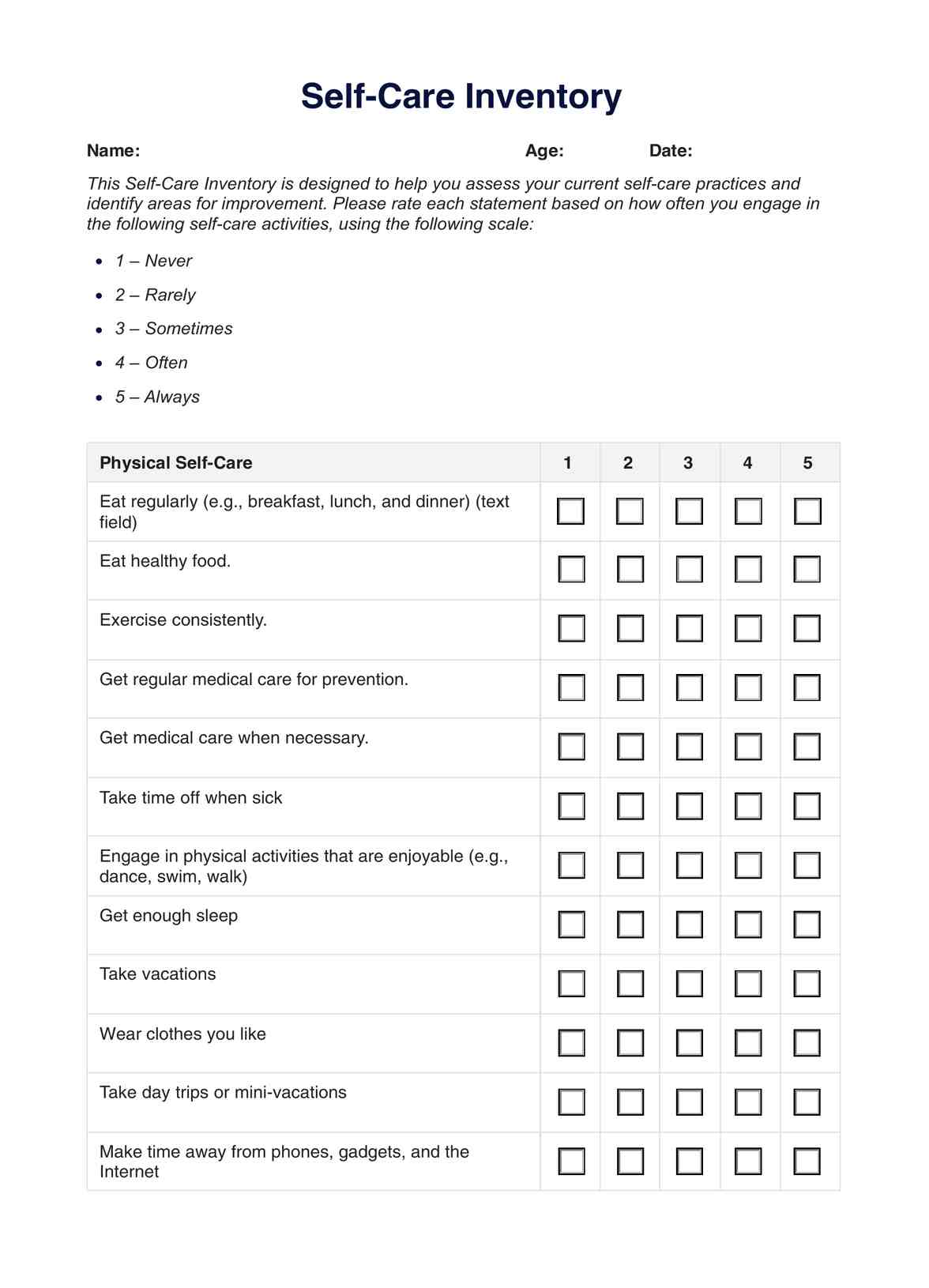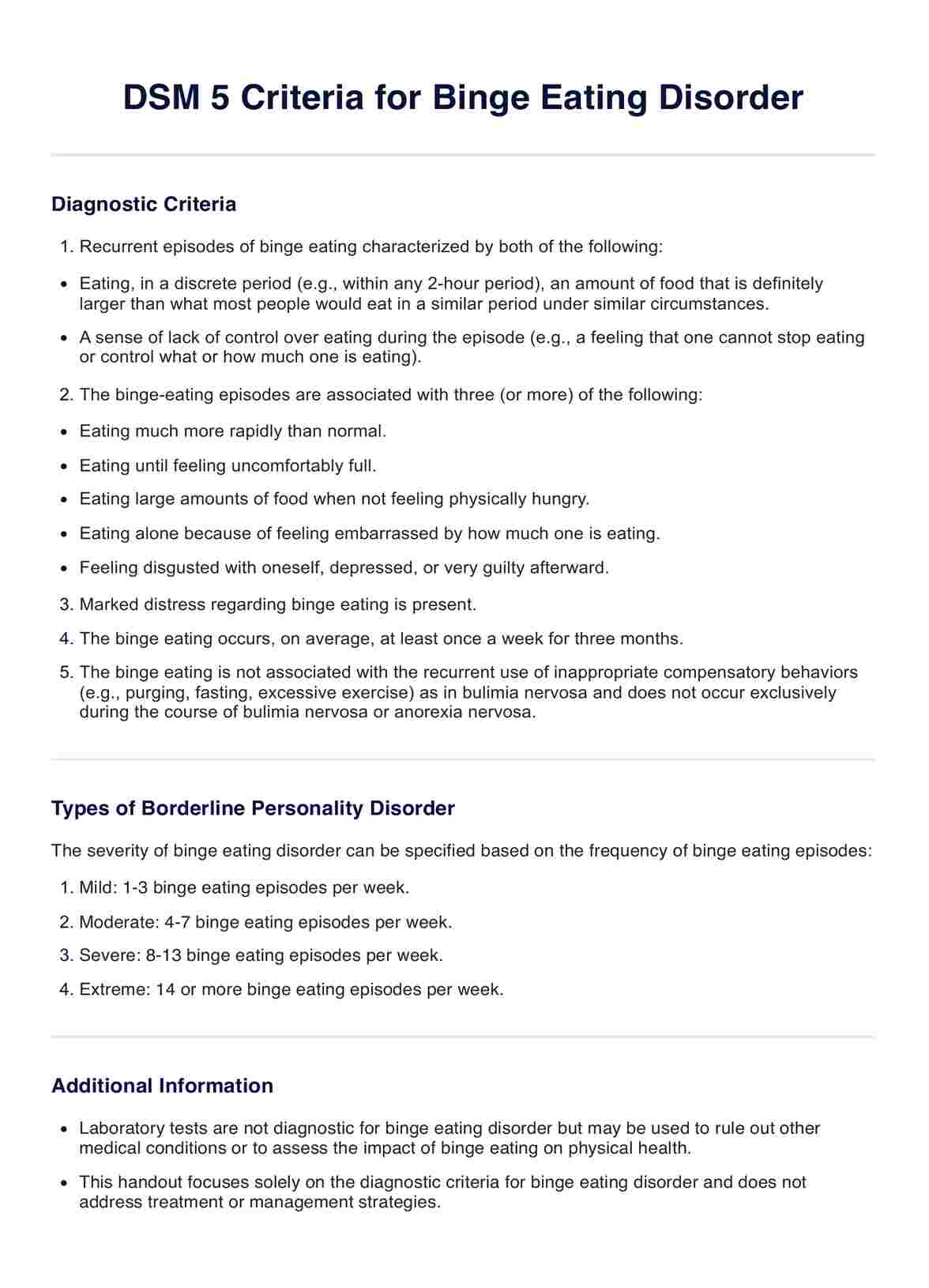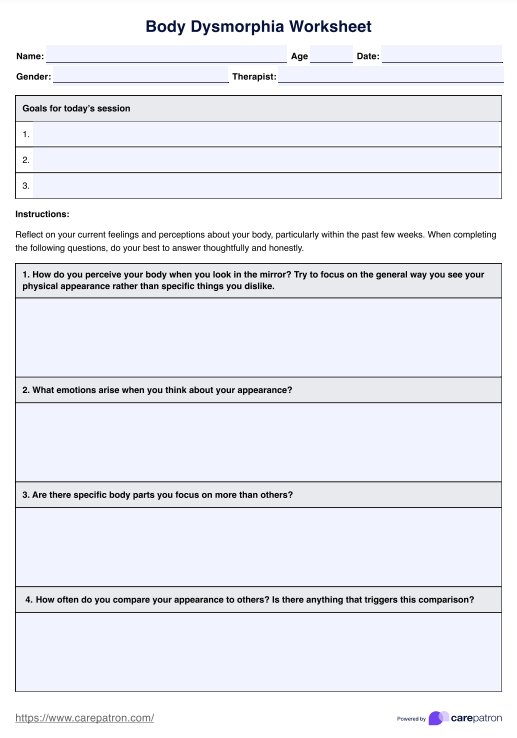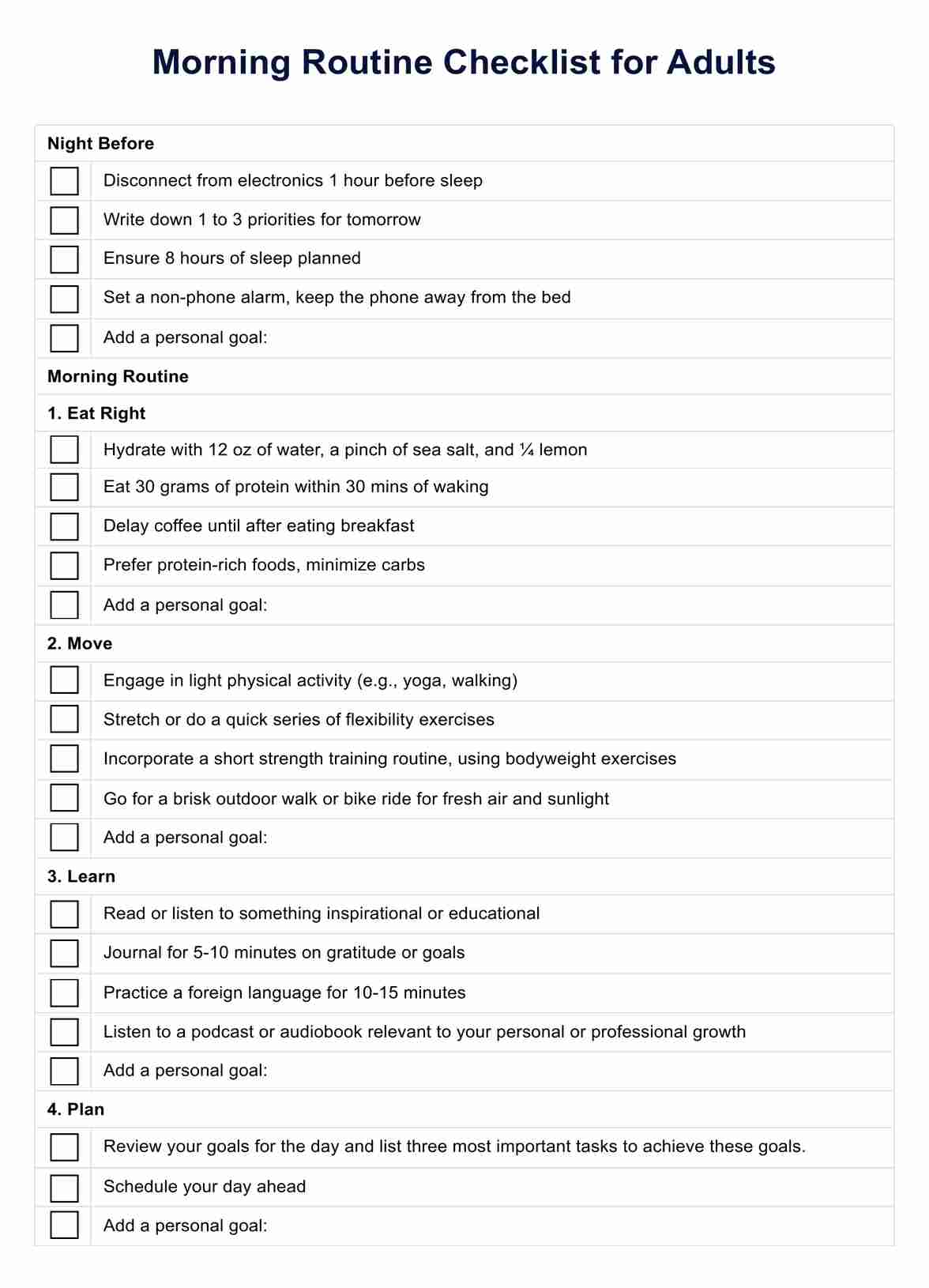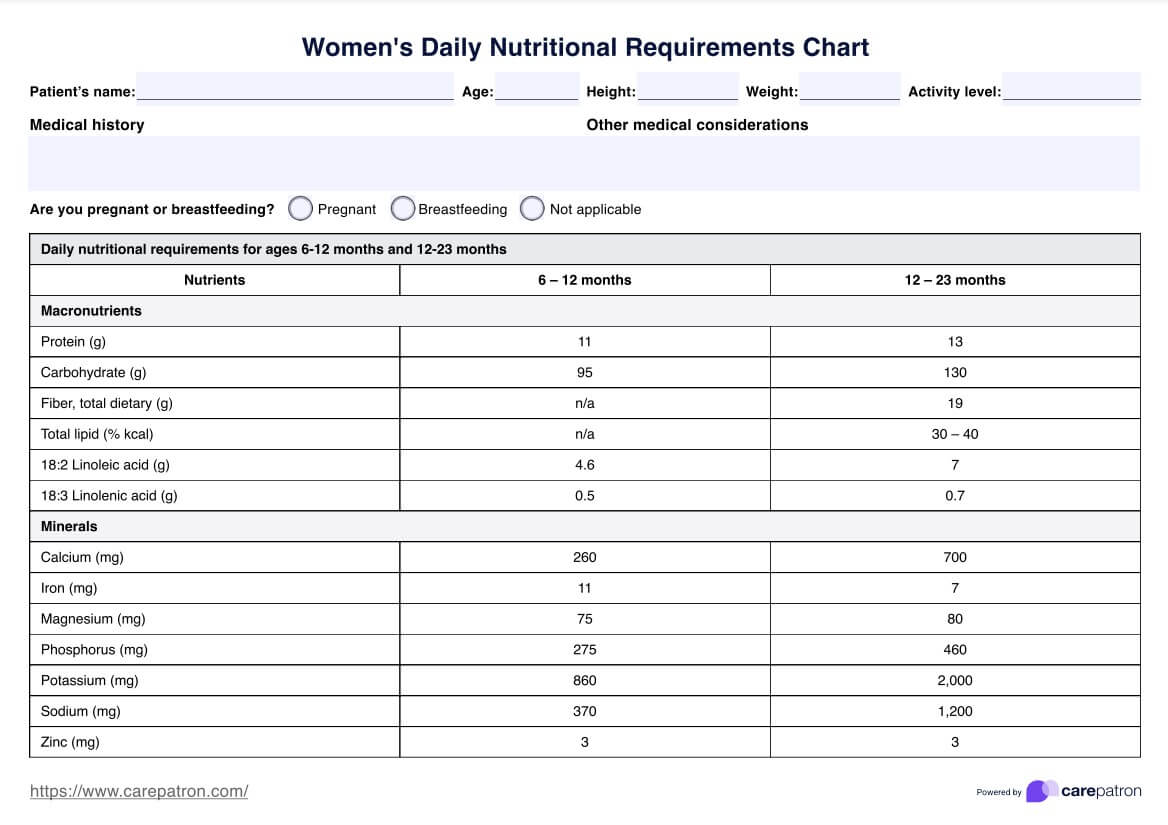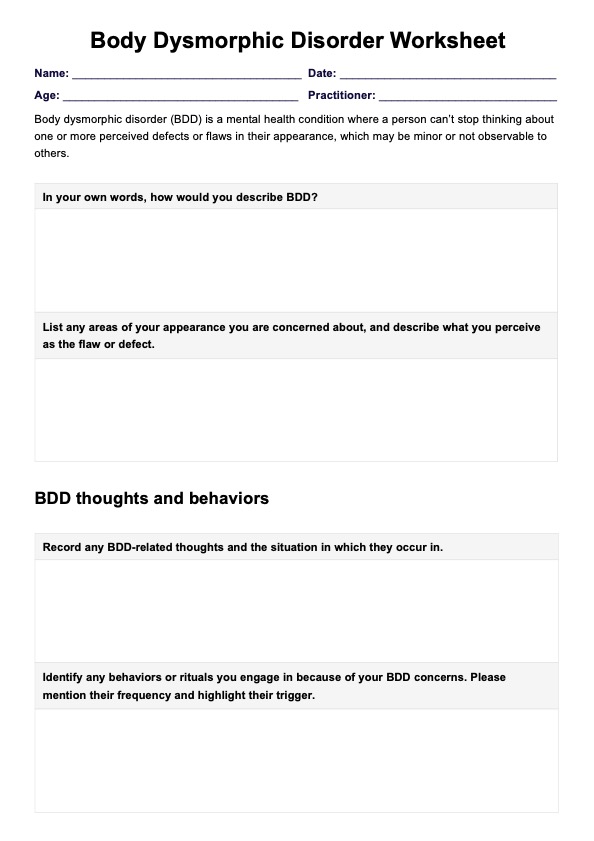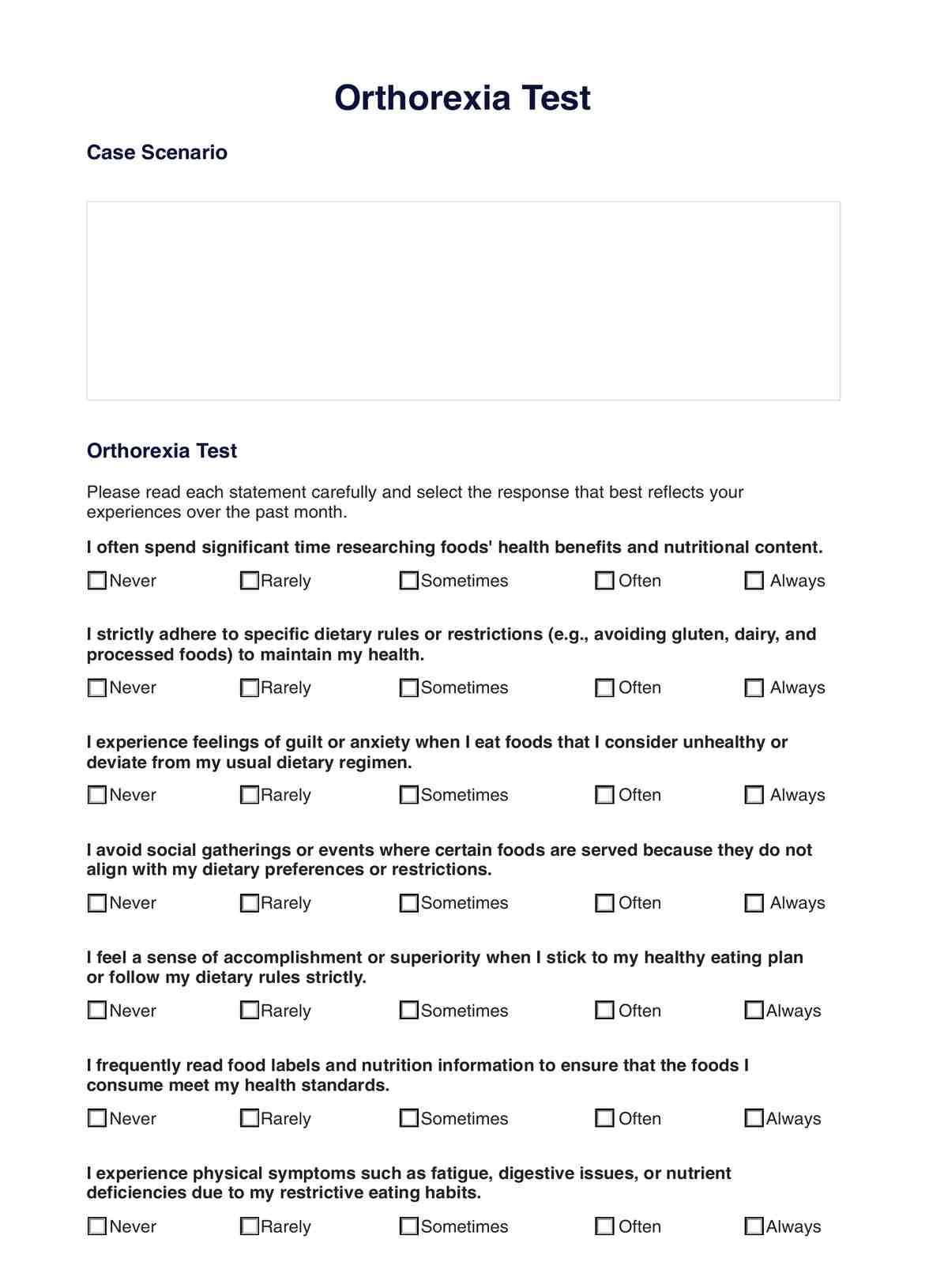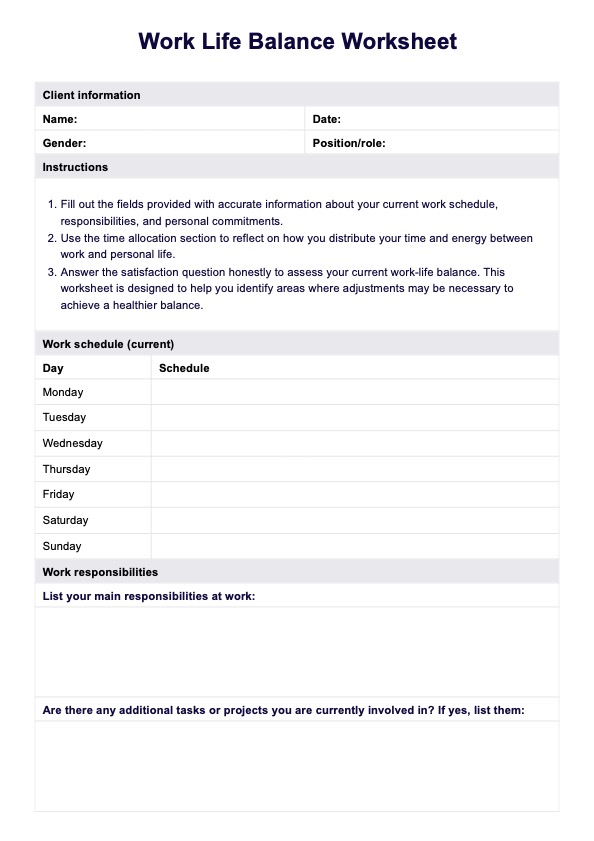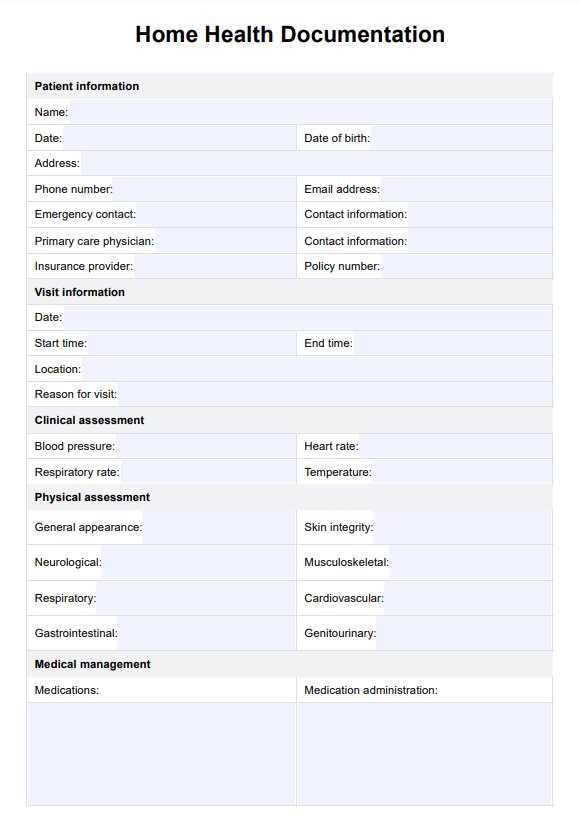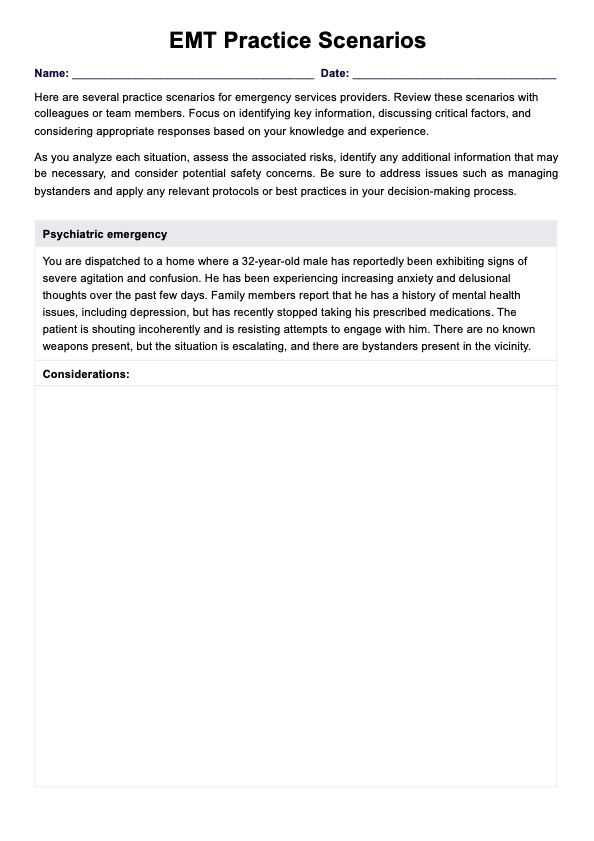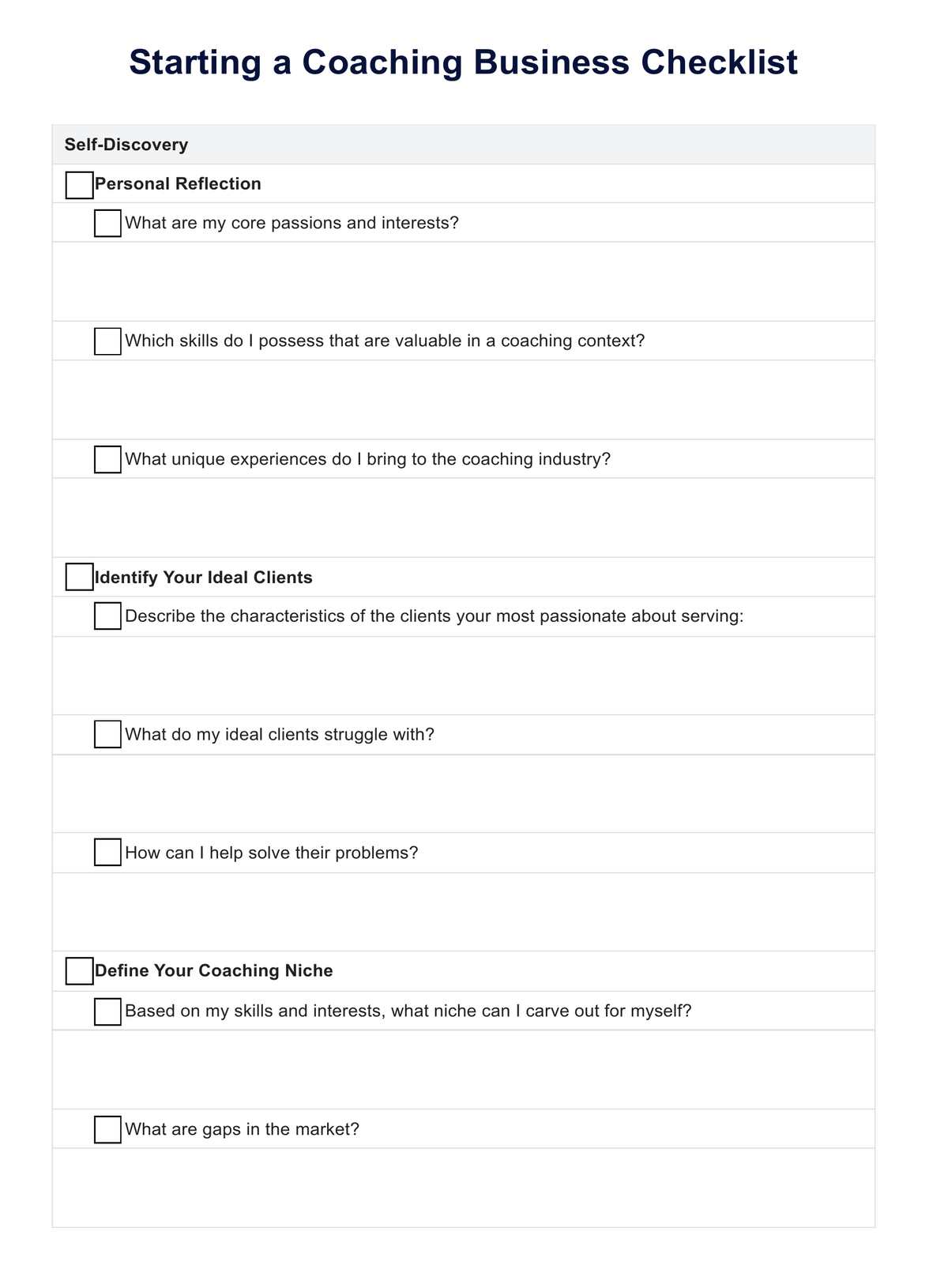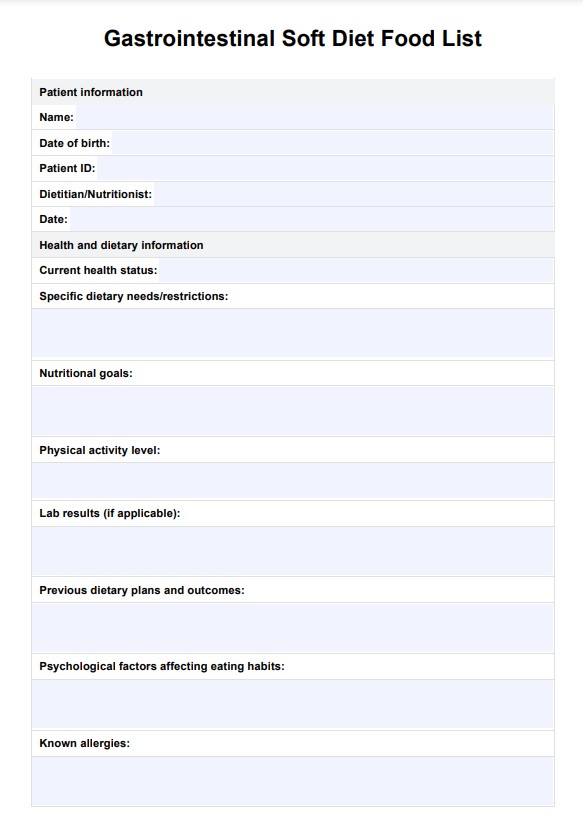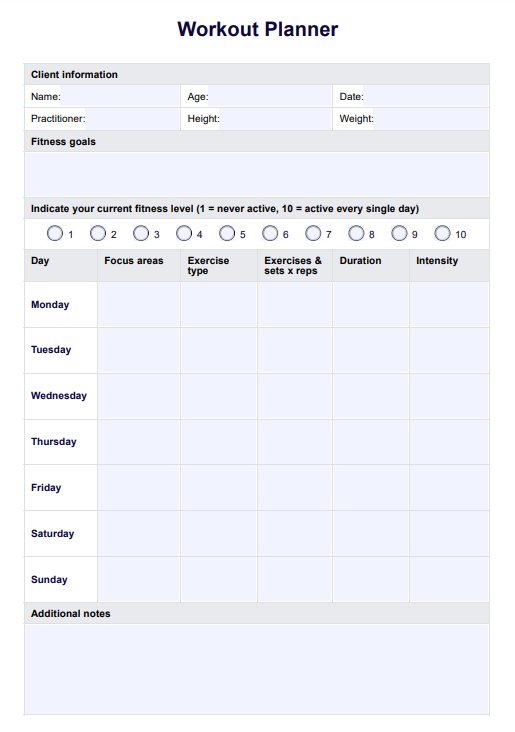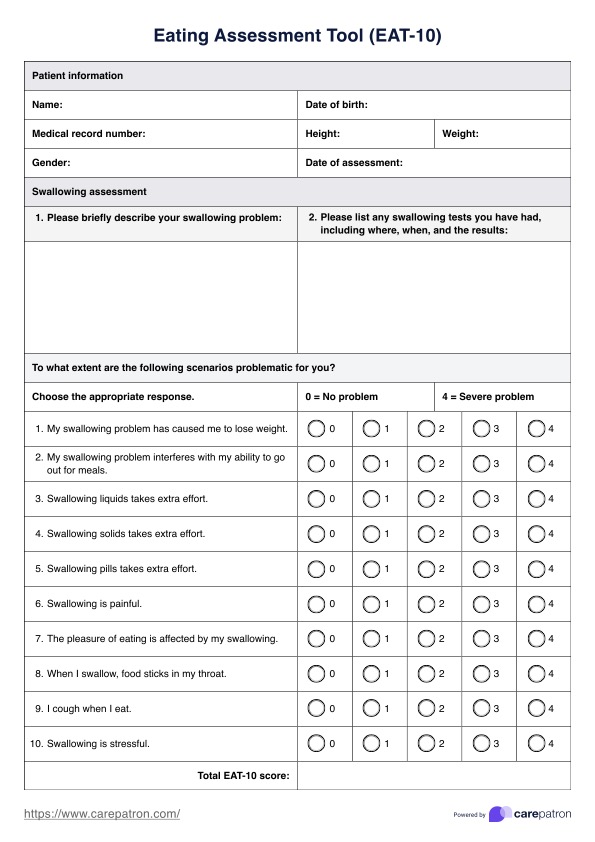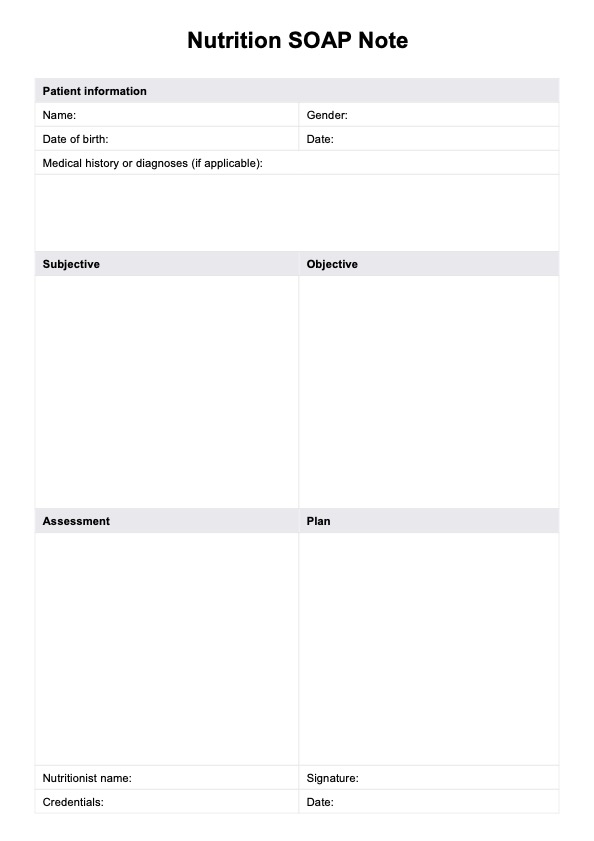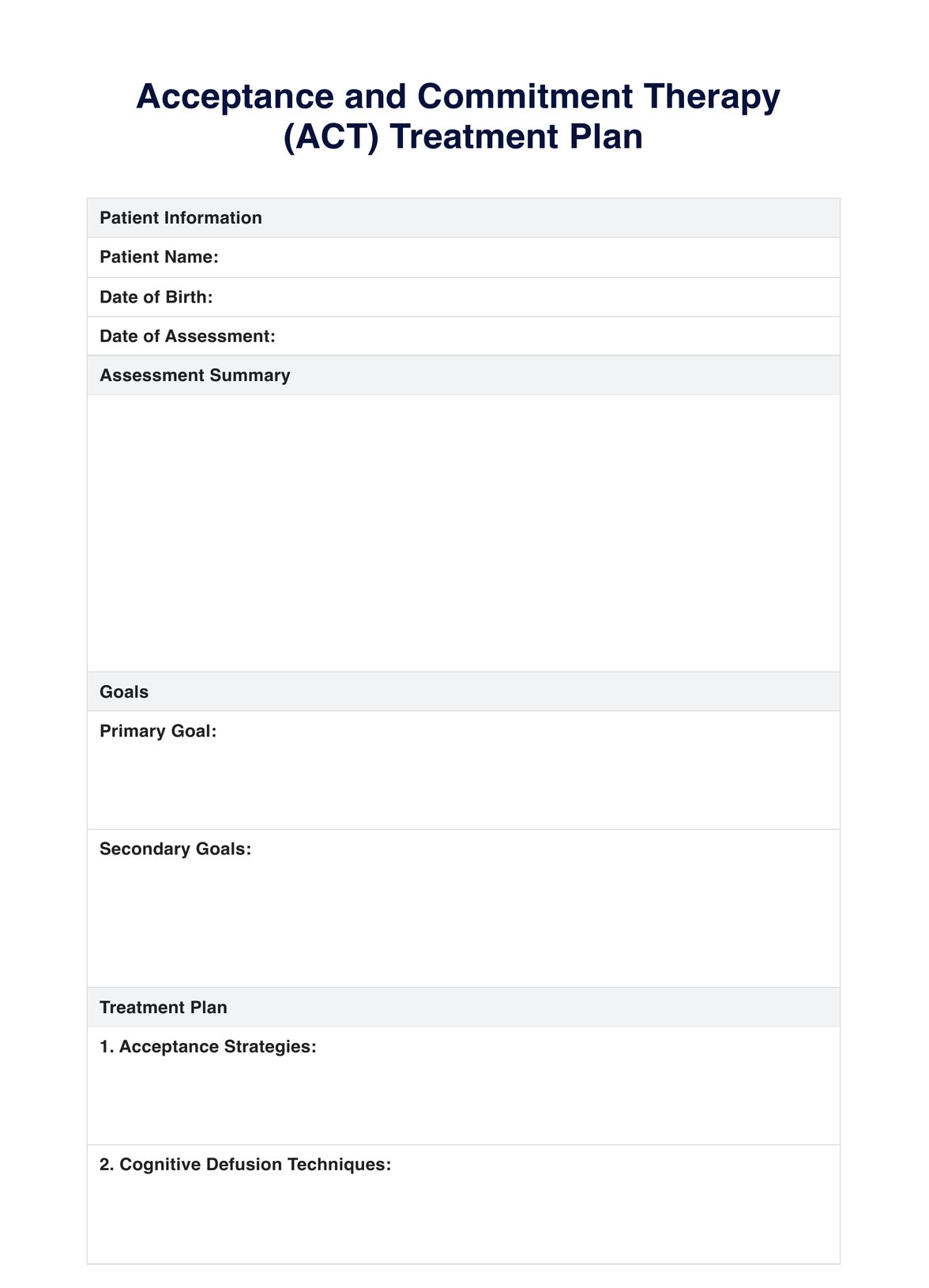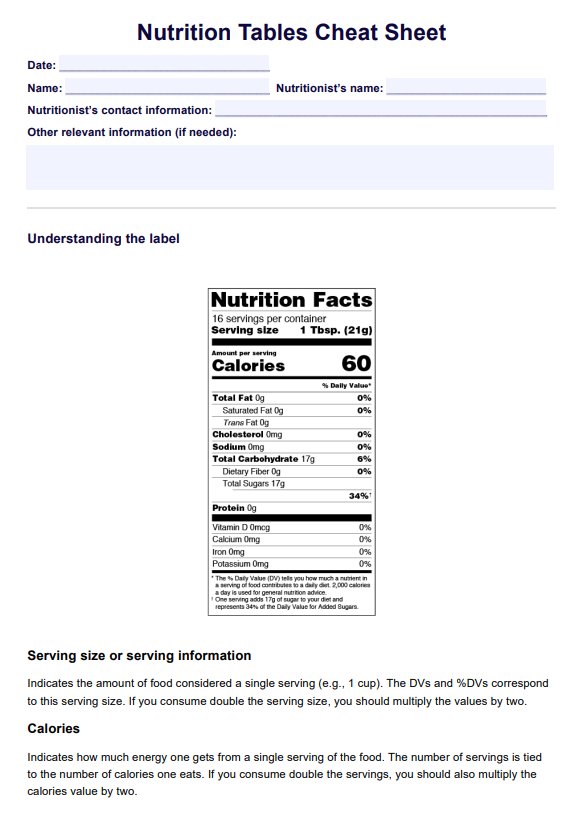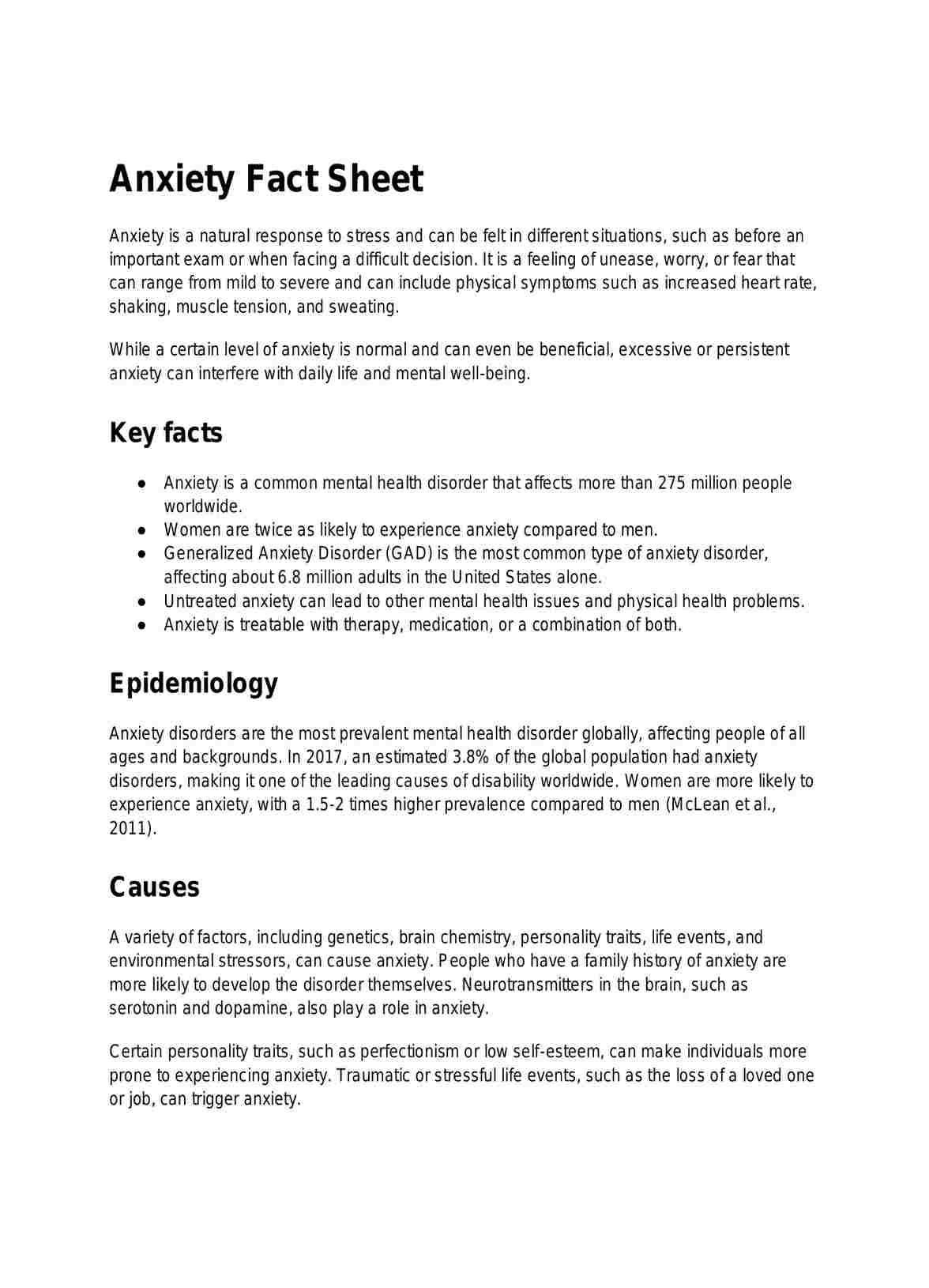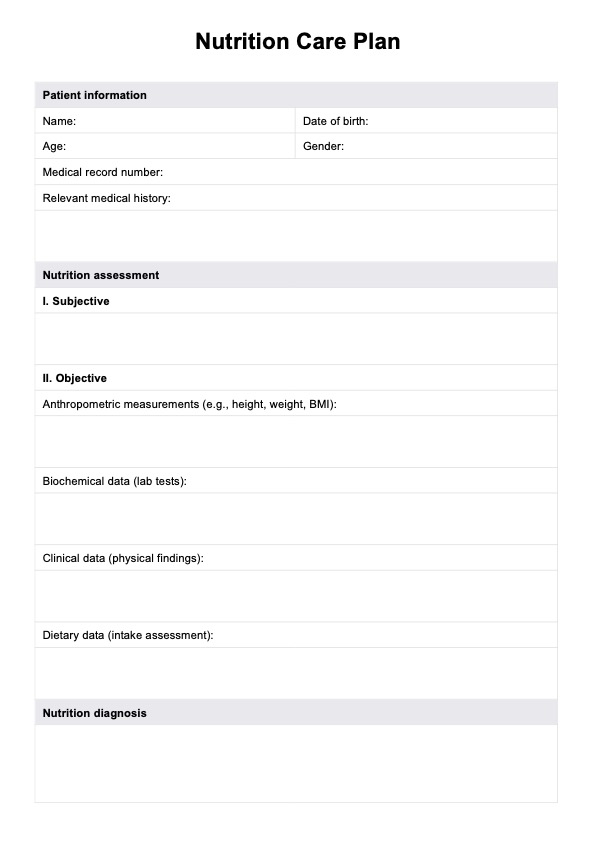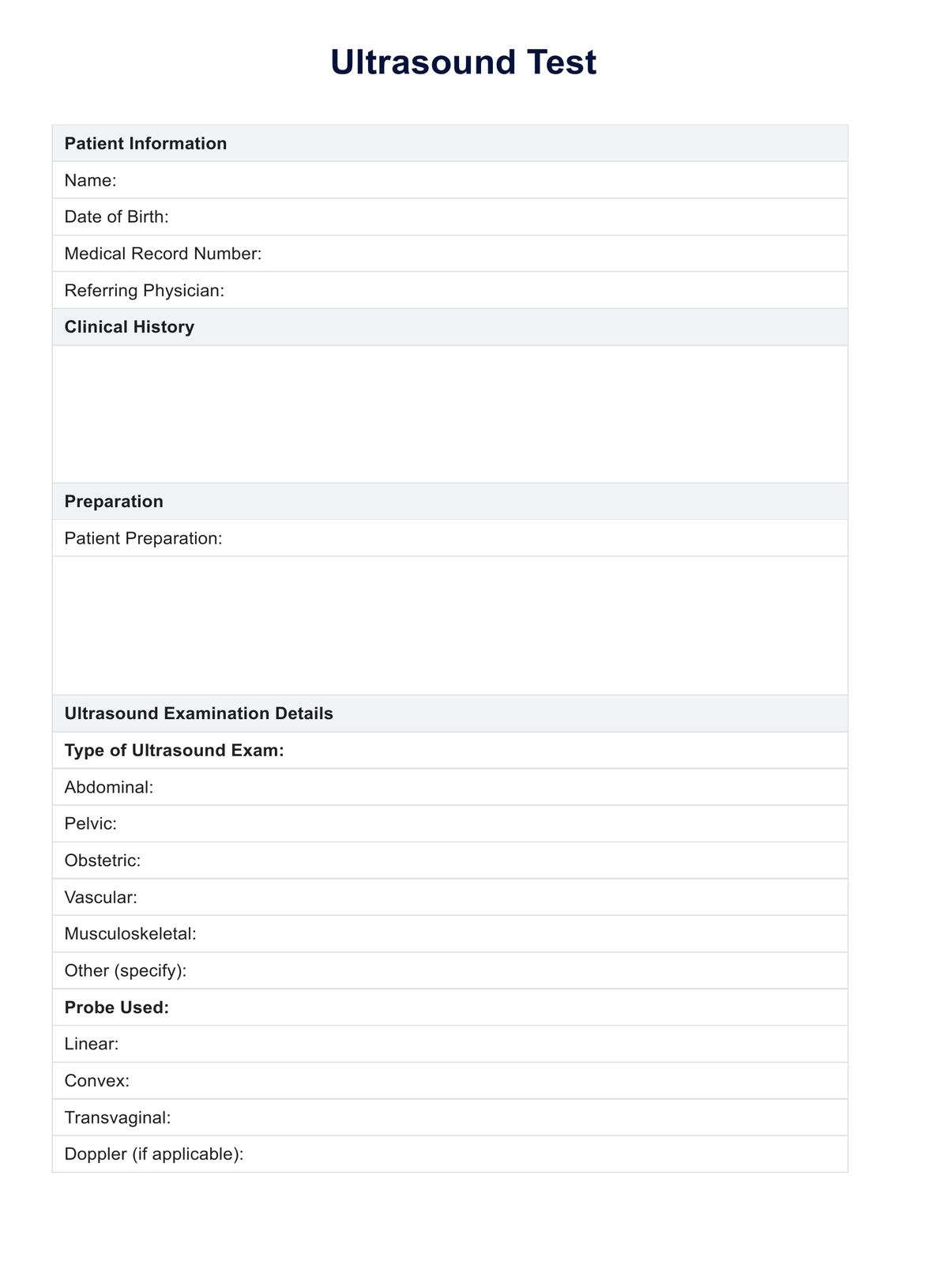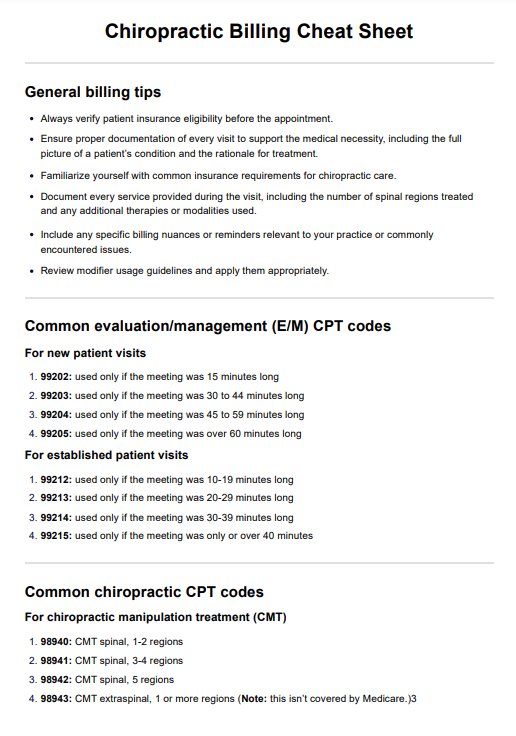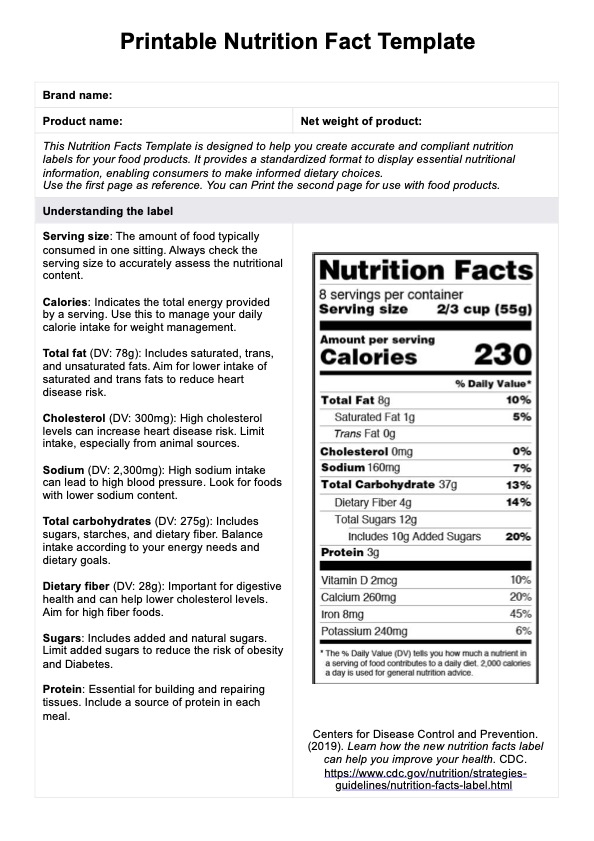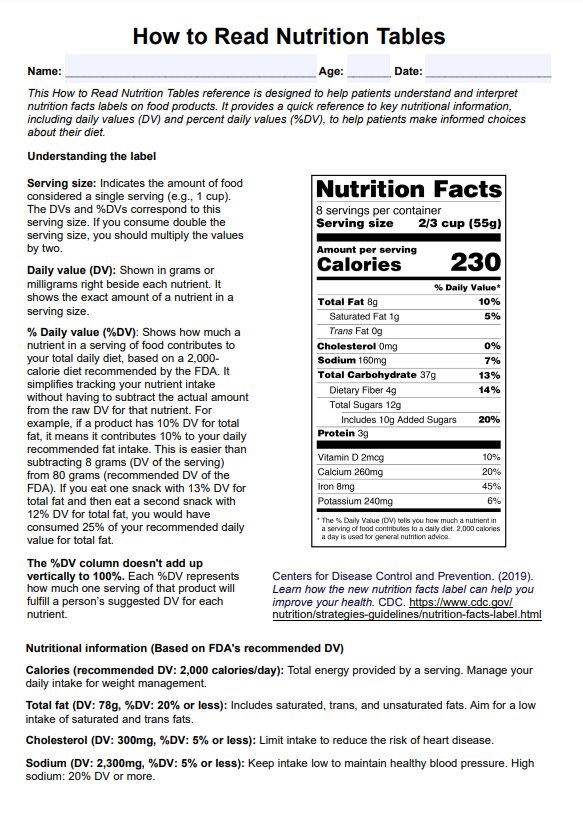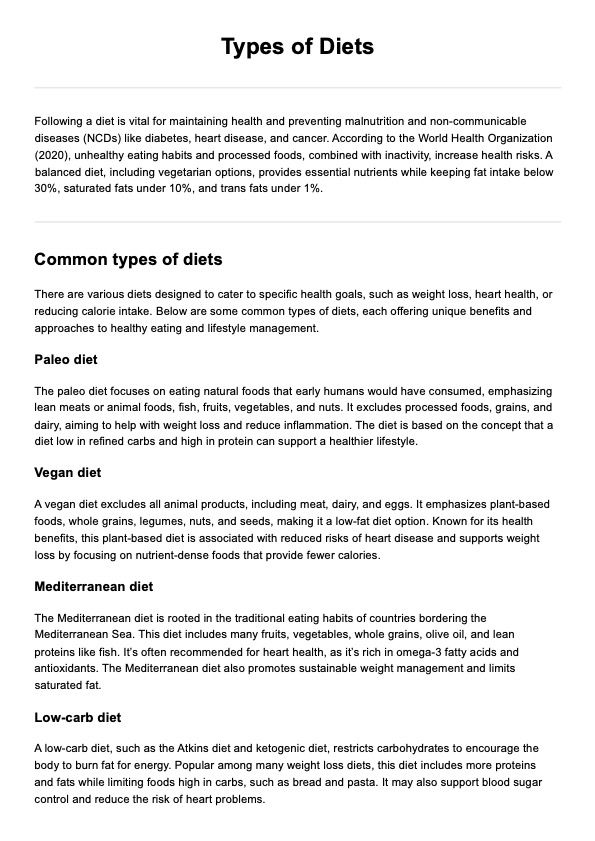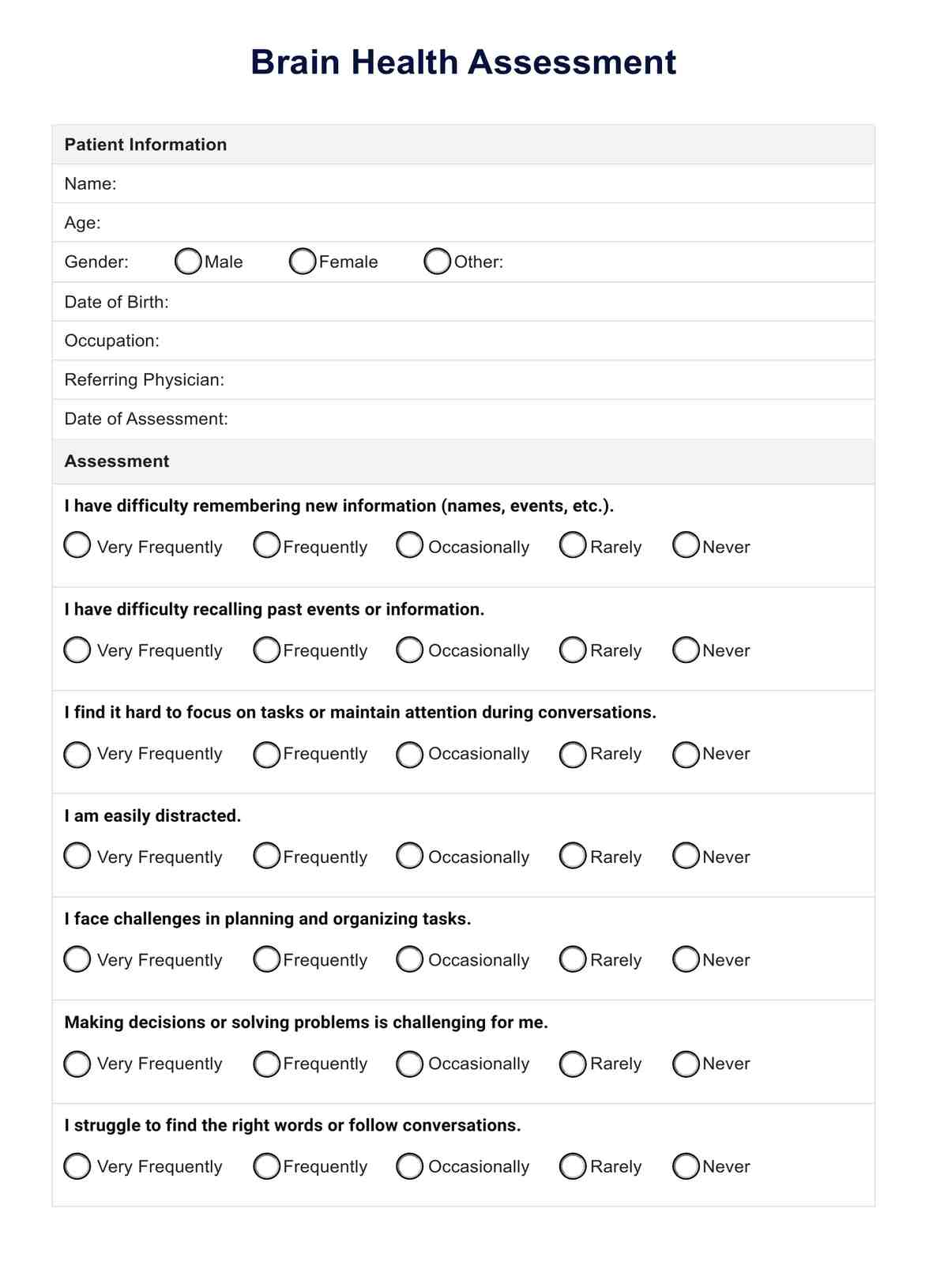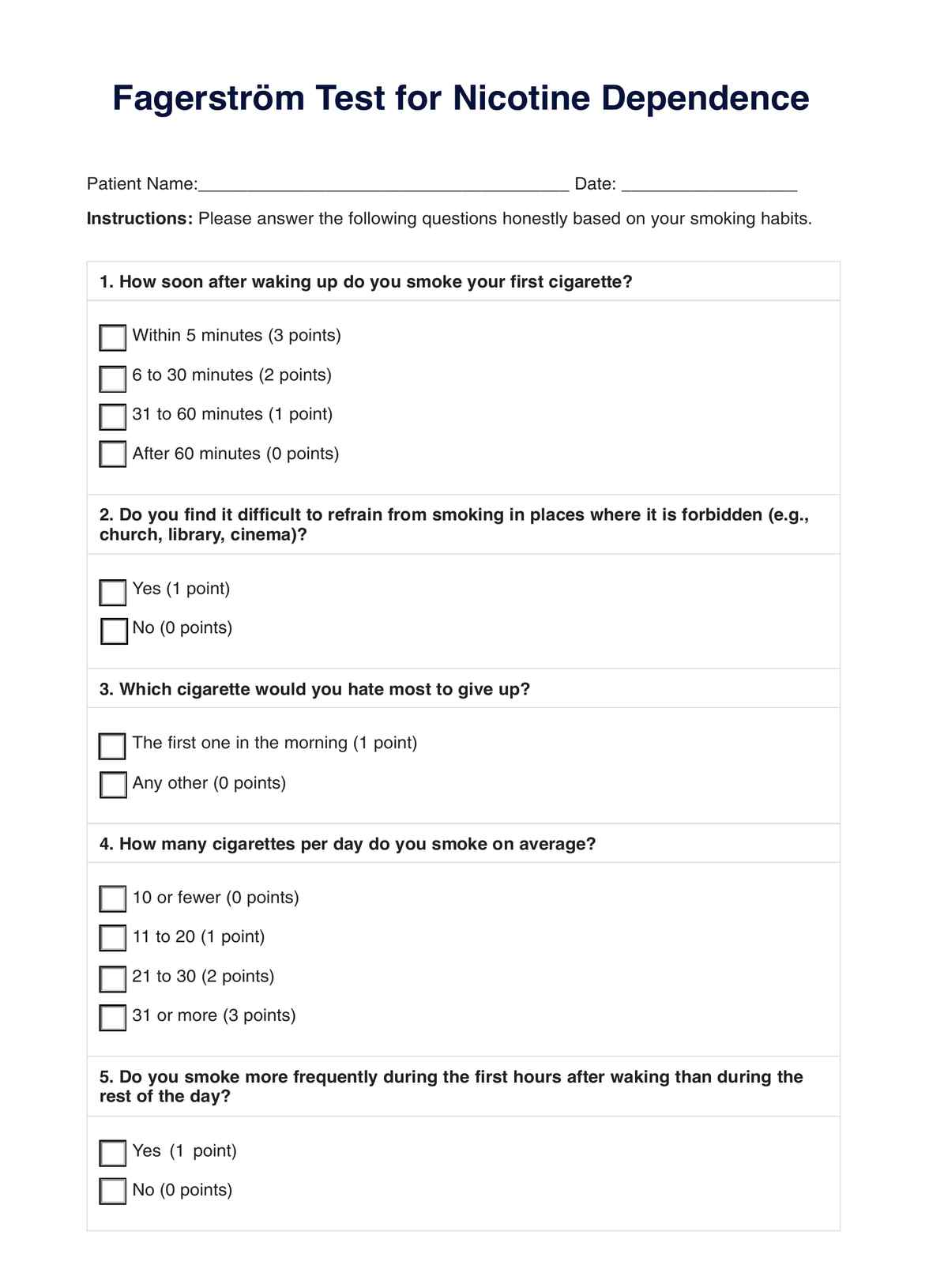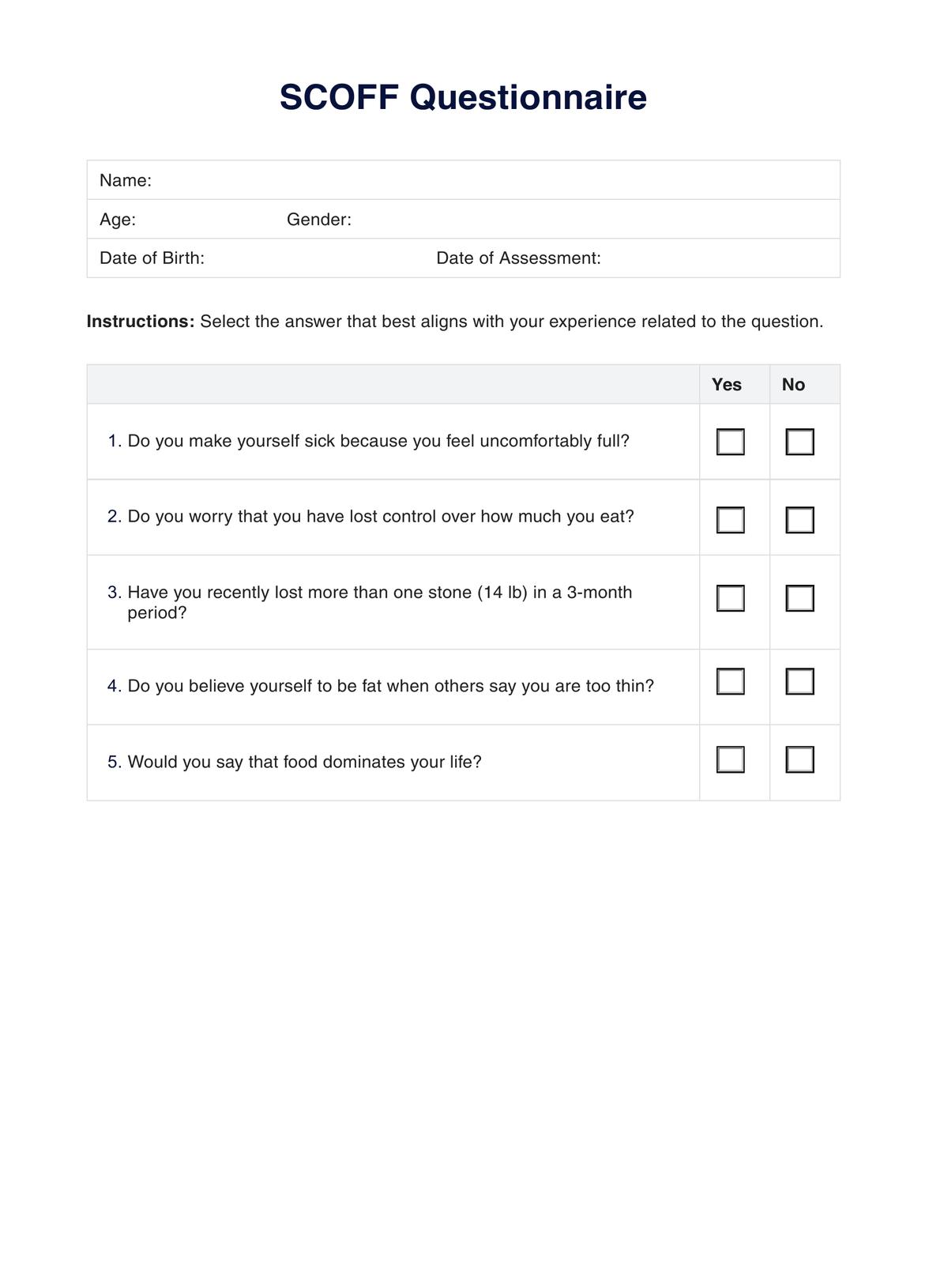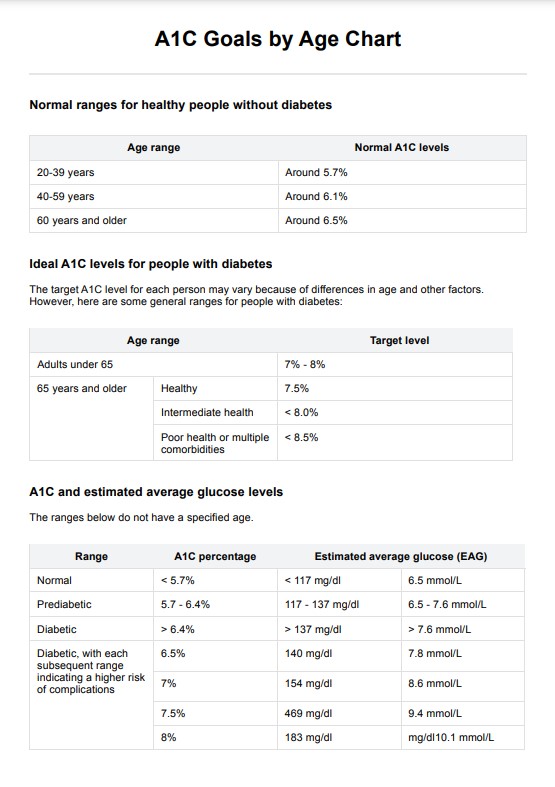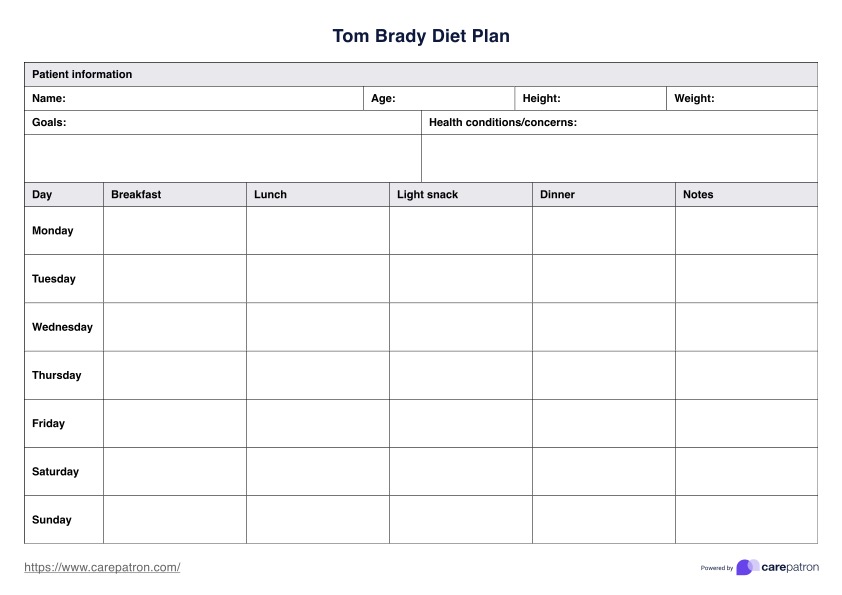7-Day Gerd Diet Plan
Get access to a free 7-Day GERD Diet Plan Template here. Create tailored meal plans for your patients in minutes.


What is a 7-day gastroesophageal reflux disease (GERD) diet plan?
A 7-day gastroesophageal reflux disease (GERD) diet plan is a document meant to assist healthcare practitioners in alleviating a patient's discomfort associated with GERD, which is commonly manifested as acid reflux and heartburn.
The key principle is to select foods that can neutralize stomach acid, such as brown rice, which aids the digestive tract and reduces overall acidity. Non-citrus fruits are also suitable sources of nutrients less likely to trigger GERD symptoms, providing vitamin C, fiber, magnesium, and potassium.
Our 7-Day GERD Diet Plan Template helps healthcare professionals plot out a comprehensive meal plan tailored to minimize GERD symptoms. The template allows patients to enjoy balanced meals without the discomfort of acid reflux or heartburn. The template lets healthcare professionals plan the patient's daily meals to include food that is easy to digest, low in acidic ingredients, and high in nutrients to support overall digestive health.
7-Day Gerd Diet Plan Template
7-Day Gerd Diet Plan Example
How does our 7-Day GERD Diet Plan Template work?
To get the most out of using our free and printable 7-Day GERD Diet Plan Template, follow the steps below:
Step 1: Secure a template copy
Access the 7-Day GERD Diet Plan Template by clicking "Use template", allowing you to customize the resource via the handy Carepatron app. Click "Download" to access a PDF copy.
Step 2: Utilize the template
Use the diet plan template to plot your patient's daily meals. Begin by selecting breakfast, lunch, dinner, and snack options and input them in the template. Incorporate whole grains, grilled chicken breast, and healthy fats like olive oil to support the digestive system.
Consider substituting acidic foods with alternatives such as mashed sweet potatoes and non-citrus fruits, which are gentler on the stomach. For snacks, include whole grain crackers or nuts, focusing on foods that are easy to digest.
You may use our downloadable GERD diet food list and healthy foods list as a reference when creating the plan.
Step 3: Educate your patient
Review the diet plan with your patient, discussing the importance of each food choice and how it helps manage GERD symptoms. Educate them on meal timing, portion control, and the benefits of avoiding common GERD triggers, such as spicy foods, caffeine, and heavy meals before bedtime.
Step 4: Monitor and adjust
After implementing the plan, schedule follow-up appointments to assess its effectiveness and gather feedback from your patient. Adjust the diet plan as needed based on symptom changes, preferences, or any new dietary needs.
When to use a GERD diet plan
A GERD diet plan is recommended for individuals experiencing symptoms of gastroesophageal reflux disease, a chronic condition characterized by the backward flow of stomach contents, including acid, into the esophagus due to the malfunctioning of the lower esophageal sphincter (LES).
This diet plan is particularly relevant when managing the discomfort and potential health issues associated with GERD. The primary objective of the GERD diet is to eliminate common trigger foods, such as fatty and fried foods, which can exacerbate heartburn symptoms.
Furthermore, this acid reflux diet plan encourages the establishment of eating habits conducive to symptom reduction and emphasizes the consumption of nutrient-dense and healthy foods to support weight management. Implementing a GERD diet plan under specific circumstances, such as when experiencing recurrent GERD symptoms, is crucial.
Recommendations for people with GERD
For people with gastroesophageal reflux disease, diet modifications can significantly reduce symptoms by avoiding certain foods and habits that trigger acid reflux. Here are some general dietary recommendations you can give your patients to help minimize their acid reflux symptoms more effectively:
Foods to eat
Although there's no definitive "GERD diet," these foods might help reduce or prevent symptoms (International Foundation for Gastrointestinal Disorders, 2014):
- Fruits and vegetables: For fruits, opting for non-citrus varieties such as bananas, melons, apples, and pears is recommended, while likely avoiding citrus fruits and juices like oranges and lemons.
- Lean proteins: Eggs are a good source of protein, though those who experience symptoms from eggs may benefit from using only the whites, as the higher-fat yolks are more likely to trigger symptoms. Lean meats are also beneficial, as high-fat meals and fried foods can lower esophageal sphincter pressure and slow down stomach emptying, which can increase reflux risk.
- Complex carbohydrates: Foods such as oatmeal, whole grain bread, rice, and couscous provide healthy complex carbohydrates. Whole grains and brown rice add fiber to the diet.
- Healthier fats: While fats are a necessary nutrient, not all are equally beneficial. It is generally recommended to limit saturated fats (often found in meat and dairy) and trans fats (in processed foods, margarine, and shortenings) and instead, in moderation, incorporate unsaturated fats from plant or fish sources.
Foods to avoid
To help manage GERD symptoms, certain foods are best avoided, as they can trigger or worsen acid reflux:
- Fatty and fried foods: These foods stay in the stomach longer, increasing the likelihood of acid reflux as stomach acid can more easily move back up into the esophagus. Examples include fast food, fried snacks, fatty cuts of meat, and heavy cream sauces.
- Spicy foods: Spicy ingredients, such as chili peppers and hot sauces, can irritate the esophagus lining and worsen GERD symptoms. Dishes with heavy spices, curries, and hot peppers may trigger or intensify heartburn.
- Citrus fruits and juices: High-acid fruits like oranges, lemons, grapefruits, and their juices can aggravate the esophagus and trigger reflux symptoms. These acidic fruits may be best avoided or consumed in moderation.
- Tomato-based products: Tomatoes and their products, like marinara sauce, ketchup, and salsa, are acidic and can contribute to heartburn and acid reflux.
- Chocolate: Chocolate contains both caffeine and theobromine, which can relax the lower esophageal sphincter, allowing stomach acid to escape into the esophagus. Dark chocolate and milk chocolate can both be potential triggers.
- Caffeine: Beverages like coffee, tea, and energy drinks can stimulate acid production and relax the esophageal sphincter, making reflux more likely.
- Carbonated drinks: Sodas and sparkling waters introduce bubbles into the stomach, which can cause bloating and increase pressure on the esophageal sphincter.
- Alcohol – Alcoholic beverages, especially wine and beer, can relax the esophageal sphincter and irritate the stomach lining, increasing acid production.
Lifestyle changes
In addition to dietary modifications, there are several lifestyle changes that can help manage symptoms (NYU Langone Health, 2024):
- It is recommended to avoid lying down for at least two hours after a meal or consuming acidic beverages, such as soda, or caffeinated drinks. This helps prevent stomach contents from flowing back into the esophagus.
- Keeping the head elevated during sleep, possibly by using one or two extra pillows, can also help prevent reflux.
- Eating smaller, more frequent meals throughout the day, rather than a few large meals, promotes digestion and can reduce the risk of heartburn.
- Wearing loose-fitting clothing can reduce pressure on the stomach, which can worsen heartburn and reflux.
- Quitting smoking is crucial, as it increases stomach acid production and weakens the lower esophageal sphincter, which normally prevents stomach contents from reentering the esophagus.
- Reducing excess weight around the midsection can relieve pressure on the stomach, preventing some stomach contents from being pushed back up into the esophagus.
References
International Foundation for Gastrointestinal Disorders. (2014). Diet Changes for GERD. Digestive Health Matters, 23(3), 3–4.
NYU Langone Health. (2024). Lifestyle changes for gastroesophageal reflux disease. Nyulangone.org. https://nyulangone.org/conditions/gastroesophageal-reflux-disease/treatments/lifestyle-changes-for-gastroesophageal-reflux-disease
Commonly asked questions
For breakfast, choose non-citrus fruits like bananas or melons and whole grains such as oatmeal. Lean proteins like egg whites or low-fat yogurt are good options. Avoid acidic juices, caffeine, and spicy or greasy foods, as they can worsen gastroesophageal reflux disease (GERD) symptoms.
Foods that are low in acid and high in fiber, like whole grains, non-citrus fruits (bananas, apples), and vegetables (leafy greens, carrots), are beneficial for healing gastroesophageal reflux disease (GERD). Lean proteins like chicken or fish and healthy fats from avocados and olive oil may also reduce inflammation and support recovery.
Bananas, oatmeal, and almonds can help neutralize stomach acid. Drinking water with a teaspoon of baking soda can provide quick relief by temporarily neutralizing excess acid in the stomach.


